Hiring Remote Employees: Travel Reimbursement, Home Offices, and More
Many businesses have transformed since the COVID-19 pandemic. Organizations experiencing human resource constraints are getting more creative when it comes to retaining and recruiting employees—including a growing remote workforce. But hiring remote employees can create uncertainties for companies to navigate.

Remote Working Tax Implications
Explore these frequently asked questions related to remote working tax implications.
- What’s the definition of tax home?
- What are considerations for determining payroll reporting?
- What’s the impact of remote employees on nexus?
- Can internal revenue code (IRC) Section 139 still be used?
- What are business considerations when hiring remote employees?
- What are the options for providing home office equipment?
- How can a company reimburse home office expenses?
- How is commuting defined and applied to travel reimbursements?
- Can employees working from home write off their office spaces?
- How is the convenience of employer rule used to determine travel reimbursement?
Generally, an employee’s tax home is the regular place of business or post of duty, regardless of where they live. It includes the entire city or general area of a business or work location.
The IRS hasn’t published updated guidance following the COVID-19 pandemic. Thus, taxpayers should follow previous rules and guidance and apply them to their specific facts and circumstances.
It’s important for businesses to understand the definitions of both home and office in relation to flexible workforces for employees who can be:
- 100% remote
- Working in the field
The remote workforce ushered in by the COVID-19 pandemic seems here to stay, resulting in the need to meet new payroll reporting requirements.
If a company has remote employees in a state where it hadn’t already registered, there will be certain thresholds being met that could call for registration in states where those employees are located.
If certain thresholds are met, such as the number of days worked in-state or amount of compensation, then the company needs to register for payroll reporting with those states. Note that the company may be required to complete other registrations with the state aside from just income tax withholding.
Employers will want to remind their employees of their individual tax reporting obligations. Given that employer withholding taxes are based on employee residence, employees need to understand the individual filing requirement in their own states as opposed to where the company is located—unless there’s reason to file in the state where the company is located.
An example reason for filing in the company’s state would be if the employee visits the office location in the other state and meets the states specific thresholds for personal income tax filing requirements, among other possible personal reasons for activity in that state.

When a company has a remote employee with out-of-state payroll, that typically creates nexus in that state for the company, unless a specific exception is met. When nexus is established, also known as physical presence, a company can create additional filing requirements for themselves, in addition to having to withhold income taxes on the employee’s wages.
A company is typically recognized as doing business in a state when any remote employee located there works for the company. This employee could establish nexus, possibly creating new income, franchise, and sales and use tax obligations.
IRC Section 139 deals with disaster relief payments from the employer that are generally tax free to the recipient. The COVID-19 pandemic was declared a disaster by the federal government and the covered period for expenses to qualify started March 13, 2020.
Section 139 disaster relief payments need to be reasonable, necessary, and the result of the declared disaster. Wages aren’t considered a Section 139 payment. IRC Section 139 can still be used related to the COVID-19 pandemic if the expenses meet the definition of a qualified payment under IRC Section 139.
If an organization is interested in providing disaster relief payments and other support to employees under Section 139 for other payment related to disaster relief (COVID-19 or otherwise), the organization could implement a policy for these types of payments.
When hiring remote employees, there are several business considerations that should be thought, both internally and externally. Below is a list of items to be considered.
- Well documented working arrangements, such as through employment agreements
- Additional administrative tasks of having remote employees
- Payroll requirements and registrations with the states, such as state tax withholding and unemployment taxes
- State nexus establishment and adding new footprints in new states
Internal Revenue Code (IRC) Section 162 permits employers to reimburse employees for legitimate job-related expenses deemed ordinary and necessary, such as a computer, monitors, printer, or internet service.
An employer has many options on how to structure home office reimbursement expenses, such as a stipend or reimbursement policy. What’s important is that it be made under an accountable plan , meaning, a set of procedures that ensures that employees don't get reimbursed for personal expenses.
An employer can reimburse employees for certain home office expenses through an accountable plan. As discussed above, the main factor for reimbursement is the IRC Section 162 standard of an ordinary and necessary business expense.
According to the IRS, ordinary and necessary expenses related to the COVID-19 pandemic can include a range of expenses related to remote work, health care, and childcare, such as:
- Home office items, such as monitors, printers, phone, and office supplies
- Cost to install new or expanded internet service
- Cost of increased utilities
Would Reimbursement be Taxable or Nontaxable?
The accountable plan allows employees to receive tax-free money for expenses while the employer deducts the expense. An employer should be ready to substantiate the business connection and cost of the expense.
Transportation expenses between an employee’s home and the main place of work are considered commuting expenses.
Daily transportation expenses employees incur while traveling from home to one or more regular places of business are generally nondeductible commuting expenses, with some exceptions.
One can deduct daily transportation expenses incurred going between the residence and a temporary workstation outside the metropolitan area where they live.
Daily transportation expenses can be deducted if an employee has one or more regular work locations away from the residence or the residence is the principal place of business, and they incur expenses going between the residence and another work location in the same trade or business.
Travel expenses are the ordinary and necessary expenses for traveling away from the home for the job. Generally, a tax home refers to the entire city or general area of a main place of business or work, regardless of where a family home is.
The Tax Cuts and Jobs Act (TCJA) of 2017 eliminated the miscellaneous deduction for home office expenses for tax years 2018–2025, making employees not eligible to claim the home office expense deduction.
Convenience of employer generally means that daily transportation expenses incurred by an employee between the primary residence and employer’s office are personal expenses.
These personal expenses aren’t eligible for either a deduction by an employer under section 162(a)(2) or tax-free reimbursement to an employee—unless they’re excluded as qualified transportation fringe benefits. This rule is subject to exceptions, however.
For example, if an employee’s residence is the principal place of business, within the meaning of IRC Section 280A, then the transportation costs between the home office and employer’s office may be deductible by the employer and eligible for tax-free reimbursement to the employee.
We’re Here to Help
For guidance on the tax implications of a remote workforce, contact your Moss Adams professional. You can also visit our Tax Services page for additional resources.
Assurance, tax, and consulting offered through Moss Adams LLP. ISO/IEC 27001 services offered through Cadence Assurance LLC, a Moss Adams company. Wealth management offered through Moss Adams Wealth Advisors LLC. Services from India provided by Moss Adams (India) LLP.
Related Topics
Contact us with questions.
Still need to file? – An expert can help or do taxes for you with 100% accuracy. Get started
- Tax Deductions and Credits
Your Top Tax Questions About Working Remotely, Answered

Share this:
- Click to share on Facebook (Opens in new window)
- Click to share on Twitter (Opens in new window)
- Click to share on LinkedIn (Opens in new window)
- Click to share on Pinterest (Opens in new window)
- Click to print (Opens in new window)
- Written by TurboTaxLisa
- Published Feb 26, 2024
Let’s take taxes off your mind
We’re ready to help you get your taxes done right,

No matter your career, recent years have changed all of our working routines in one way or another. Whether it means wearing a mask to work every day, staying home and working from your kitchen table, or working hybrid – work life definitely feels and looks different than it used to – especially before 2020.
If you’re one of the many who have been working from home, you may be wondering, “Can I deduct my work from home expenses?”
Answers To Tax Questions About Remote Work
TurboTax has you covered and is here to answer the most common remote-working questions we’re seeing, including what type of remote work qualifies for tax deductions and what work-related items you may be able to deduct.
If I’m an employee and my job is fully remote and I have working from home, can I deduct my work-from-home expenses?
Although there has been an increase in employees working at home since coronavirus, under tax reform, employees can no longer take federal tax deductions for unreimbursed employee expenses like work-from-home expenses.
In general, only self-employed individuals can take deductions for expenses related to working from home. *Reservists, performing artists, and fee based government officials may be able to deduct certain unreimbursed business expenses.
If I can’t deduct work-from-home expenses as an employee, is there anything I can do to offset some of my out of pocket expenses related to work?
Although you can’t take federal tax deductions for work-from-home expenses, if you are an employee, some states have enacted their own laws requiring employers to reimburse employees for necessary business expenses or allowing them to deduct unreimbursed employee expenses on their state tax returns.
You can check with your individual state departments of revenue. TurboTax is also up to date with individual state laws, so you don’t need to know if your state allows unreimbursed employee deductions.
If my employer has an accountable plan, can I be reimbursed for business expenses?
Yes, an accountable plan is a plan set up by employers to reimburse employees for business-related expenses. As long as the plan follows IRS regulations, employees can be reimbursed for necessary business expenses.
I’m self-employed, what work-from-home expenses can I take?
Self-employed business owners can deduct up to $1,160,000 (for tax year 2023) for qualified business equipment like computers, printers, and office furniture. The amount you can deduct is still limited to the amount of income from business activity. You can also deduct supplies that you buy like paper, printer ink, or supplies for your customers, and you can take the home office deduction .
What is the home office deduction and how does it work?
The home office deduction may be one of the biggest work-from-home expenses a self-employed person can take since you can take a deduction that is a portion of your home mortgage interest or rent, property taxes, homeowners insurance, utilities, and depreciation based on the square footage of space used directly and exclusively for your business.
There is also a simplified method that is up to $1,500 (up to 300 square feet x $5 per square foot) that gives you a flat deduction without taking into account individual home expenses. The simplified method allows for less record keeping, however the original home office deduction can give you a bigger deduction.
For instance, if your home office takes up the maximum 300 square feet of your home, the maximum you can deduct is $1,500 under the simplified home office deduction, but if you use up to 300 square feet of your 2,000 square foot home and your home expenses are $40,000 your deduction will be $6,000 (300/2000 sq ft x 40,000).
If I’m self-employed but don’t have an office in my home and instead work from my kitchen table, can I take the home office deduction?
No, you must have a dedicated space where you conduct your business. You can’t claim the home office deduction for conducting business in the same space your family eats and your kids do their homework. Your home office must be: your principal place of business; a place where you meet patients, clients, or customers in the normal course of business; a separate structure not attached to the dwelling and used in connection with the business.
What if I’m a teacher and have been required to work from home? Can I deduct work from home expenses?
You may have been working from home toward the end of last school year and part of this school year. If you’re a teacher, keep in mind that although you can’t deduct work-from-home expenses like the home office deduction, you can take the Teachers Educator Deduction worth up to $250 for supplies you buy directly related to teaching. If you and your spouse are both teachers, that can be up to a $500 tax deduction.
No matter what moves you made last year, TurboTax will make them count on your taxes. Whether you want to do your taxes yourself or have a TurboTax expert file for you, we’ll make sure you get every dollar you deserve and your biggest possible refund – guaranteed.
Previous Post
Can I Take a Tax Deduction for a Bad Investment?
What is a Refundable Tax Credit?

Written by Lisa Greene-Lewis
Lisa has over 20 years of experience in tax preparation. Her success is attributed to being able to interpret tax laws and help clients better understand them. She has held positions as a public auditor, controller, and operations manager. Lisa has appeared on the Steve Harvey Show, the Ellen Show, and major news broadcast to break down tax laws and help taxpayers understand what tax laws mean to them. For Lisa, getting timely and accurate information out to taxpayers to help them keep more of their money is paramount. More from Lisa Greene-Lewis
Leave a Reply Cancel reply
Browse related articles.

Unknown Tax Deductions for Bloggers

7 Crazy Things People Have Deducted

You Can Deduct That? 6 Surprising Tax Deduction Tips fo…

5 Tax Deductions and Credits for Working Moms

Is a Dog Your Tax Refund’s Best Friend?

8 Tax Breaks and Tips for the Working Mom

Top Job Seeker Tax Deductions

- Tax Planning
Tax Tips for Retirees

Tax Considerations for Cancer Patients

TurboTax AnswerXchange Question of the Month: Standard…
- English (CA)
- Deutsch (DE)
- Deutsch (CH)
Managing business travel expenses
Working from home expenses & allowance.
?)
Here at Travelperk, our workplace management team was quick to respond to the new demands of WFH. They were able to quickly recognize what we could and could not supply and set up expense processes for the cost of purchasing or transporting essentials.
What are working from home expenses?
- A reliable internet connection—either an unlimited business broadband service or a cellular backup based on a mobile router, like a Mifi dongle
- A laptop or computer,—as well as additional hardware such as a laptop riser, an external keyboard and mouse, and a second (or third) monitor
- Specialist software—you’ll need the right tools to carry out your job, in addition to communicating and collaborating with your team
- Appropriate furniture - get your desk set-up feeling comfortable with an ergonomic chair
What work from home expenses can you (or your employees) claim?
Hmrc and working from home expenses, what working from home expenses do you not have to cover, how can employees calculate working from home expenses, how can businesses track and collect working from home expenses.
At TravelPerk, we use Expensify to allow our employees to make expense claims. Working from home meant paper receipts were not an option, so it was good that we were already digital-first.
What home office equipment should you provide?
What is the nature of the work, call-heavy jobs, large files and downloads, when is it easier to provide a home office stipend and avoid expenses.
Here at TravelPerk, we made the decision to provide staff with a general working from home stipend. We felt this was more time-efficient than asking people to make individual expense claims for recurring things like additional data usage or stationary. Only expenses that exceed the stipend are processed by our Finance team.
?)
Make business travel simpler. Forever.
- See our platform in action . Trusted by thousands of companies worldwide, TravelPerk makes business travel simpler to manage with more flexibility, full control of spending with easy reporting, and options to offset your carbon footprint.
- Find hundreds of resources on all things business travel, from tips on traveling more sustainably, to advice on setting up a business travel policy, and managing your expenses. Our latest e-books and blog posts have you covered.
- Never miss another update. Stay in touch with us on social for the latest product releases, upcoming events, and articles fresh off the press.
- Business Travel Management
- Offset Carbon Footprint
- Flexible travel
- Travelperk Sustainability Policy
- Corporate Travel Resources
- Corporate Travel Glossary
- For Travel Managers
- For Finance Teams
- For Travelers
- Thoughts from TravelPerk
- Careers Hiring
- User Reviews
- Integrations
- Privacy Center
- Help Center
- Privacy Policy
- Cookies Policy
- Modern Slavery Act | Statement
- Supplier Code of Conduct
Home Office Tax Deduction: Work-from-Home Write-Offs for 2023
Can you claim the home office tax deduction this year?
- Newsletter sign up Newsletter

Like millions of people in the U.S., you may be fortunate to work from home. ( Data show that the number of people working from home nearly tripled over the past few years). That may make you wonder whether you can claim a home office tax deduction on your federal income tax return. After all, you likely have some unreimbursed expenses. For example, you might pay for printer paper, ink, and other office supplies. Plus, your electric and utility bills are likely higher since you're home during the day.
But the reality is not every taxpayer can claim the home office deduction. Here's what you should know about the home office tax deduction before you file your 2023 tax return.
Home office tax deduction: Who qualifies?
Some people who work from home can deduct their business-related expenses, and there is also something called the "home office tax deduction" that lets you write off expenses for the business use of your home. However, whether you can claim those tax breaks depends on your employment status.
Subscribe to Kiplinger’s Personal Finance
Be a smarter, better informed investor.

Sign up for Kiplinger’s Free E-Newsletters
Profit and prosper with the best of expert advice on investing, taxes, retirement, personal finance and more - straight to your e-mail.
Profit and prosper with the best of expert advice - straight to your e-mail.
Employees miss out. If you're a regular employee working from home, you can't deduct any of your related expenses on your tax return.
In the past, you could claim an itemized deduction for unreimbursed business expenses, including expenses for the business use of part of your home if they exceeded 2% of your adjusted gross income. However, that deduction was temporarily suspended. It's scheduled to go back into effect in 2026.
Home office tax deduction for self-employed people
Self-employed people can generally deduct office expenses on Schedule C (Form 1040) whether or not they work from home. This write-off covers office supplies, postage, computers, printers, and all the other ordinary and necessary things you need to run a home office.
The home office tax deduction is an often overlooked tax break for the self-employed that covers expenses for the business use of your home, including mortgage interest, rent, insurance, utilities, repairs, and depreciation.
It doesn't matter what type of home you have (e.g., single family, townhouse, apartment, condo, mobile home, or boat.) You can also claim the home office tax deduction if you worked in an outbuilding on your property, such as an unattached garage, studio, barn, or greenhouse.
Note: You cannot claim the home office tax deduction for any part of your home or property used exclusively as a hotel, motel, inn, or the like.
Claiming the home office tax deduction might lower your tax bill , but to qualify, you must use part of your home "regularly and exclusively" as your principal place of business. If you only work from home for part of the year, you can only claim the deduction for the period that you can satisfy the "regularly and exclusively" requirements.
"Regular use" means you use a specific area of your home (e.g., a room or other separately identifiable space) for business regularly. Incidental or occasional use of the space for business doesn't count.
"Exclusive use" means you use a specific area of your home only for your trade or business. The space doesn't have to be marked off by a permanent partition. You can't claim the home office deduction if you use the space for business and personal purposes. However, the exclusive use requirement might not apply if you use part of your home:
- For the storage of inventory or product samples; or
- As a daycare facility.
The space must also be used:
- As your principal place of business for your trade or business;
- To meet or deal with your patients, clients, or customers in the normal course of your trade or business; or
- In connection with your trade or business if it's a separate structure that's not attached to your home.
(See IRS Publication 587 for more information about these and other requirements for the home office deduction.)
How to calculate the home office deduction
If you qualify, there are two ways to calculate the home office deduction.
- Under the actual expense" method , you essentially multiply the expenses of operating your home by the percentage of your home devoted to business use. If you work from home for part of the year, only include expenses incurred during that time.
- Under the simplified method , you deduct $5 for every square foot of space in your home used for a qualified business purpose. Again, you can only claim the deduction for the time you work from home.
For example, if you have a 300-square-foot home office (the maximum size allowed for this method), and you work from home for three months (25% of the year), your deduction is $375 ((300 x $5) x 0.25).
Tax Tip: If you use the simplified method, you can't depreciate the part of your home used for business. However, to the extent you qualify, you can still claim itemized deductions for mortgage interest, real property taxes, and casualty losses for your home without allocating them between personal and business use.
The deduction is claimed on Line 30 of Schedule C (Form 1040) . If you use your home for more than one business, file a separate Schedule C for each business. Don't combine your deductions for each business on a single Schedule C.
If you use the actual expense method to calculate the tax break, also complete Form 8829 and file it with the rest of your tax return. If you use more than one home for business, you can file a Form 8829 for each home or use the simplified method for one home and Form 8829 for others. Combine all amounts calculated using the simplified method and amounts calculated using Form 8829, and then enter the total on Line 30 of the Schedule C you file for the business.
Employees with a side business
If you're an employee at a "regular" job, but you also have your own side hustle, you can claim deductions for business expenses and the home office deduction for your own business — if you meet all the requirements. Being an employee doesn't mean you can't also claim the deductions you're entitled to as a self-employed person.
Related Content
- Educator Expenses Tax Deduction
- 7 Overlooked Tax Deductions and Credits for the Self-Employed
- 2023-2024 Federal Tax Brackets and Income Tax Rates
To continue reading this article please register for free
This is different from signing in to your print subscription
Why am I seeing this? Find out more here
Rocky Mengle was a Senior Tax Editor for Kiplinger from October 2018 to January 2023 with more than 20 years of experience covering federal and state tax developments. Before coming to Kiplinger, Rocky worked for Wolters Kluwer Tax & Accounting, and Kleinrock Publishing, where he provided breaking news and guidance for CPAs, tax attorneys, and other tax professionals. He has also been quoted as an expert by USA Today , Forbes , U.S. News & World Report , Reuters , Accounting Today , and other media outlets. Rocky holds a law degree from the University of Connecticut and a B.A. in History from Salisbury University.
- Katelyn Washington Tax Writer

It's not easy, but you may be able to retire by 40 or 45 if you take these FIRE (Financial Independence, Retire Early) steps now.
By Jacob Schroeder Published 27 April 24

Both prospects are expensive these days, but there are several questions you can ask yourself to help you decide what’s right for you.
By Justin Stivers, Esq. Published 27 April 24

Tax Cuts Georgians now have a tax package containing income tax cuts, childcare relief, and potential property tax caps.
By Kelley R. Taylor Last updated 23 April 24

EV Credits Claiming federal electric vehicle tax credits at the point of sale is a new and popular option in 2024.
By Kelley R. Taylor Last updated 20 April 24

Fraud A new report sheds light on how older adult scam victims end up with big tax bills and lost retirement savings.
By Kelley R. Taylor Last updated 18 April 24

Tax Filing Tax Day means some people need to mail their federal income tax returns.
By Kelley R. Taylor Published 15 April 24

Tax Schemes The IRS says high-income filers are targets for several illegal tax schemes.
By Katelyn Washington Last updated 14 April 24

Tax Filing There are plenty of reasons not to mail your tax return this year, but here’s what you should know if you are.
By Katelyn Washington Last updated 15 April 24

Tax Breaks Lowering your taxable income is the key to paying less to the IRS. Several federal tax credits and deductions can help.
By Kelley R. Taylor Last updated 9 April 24

Scams Tax season is a time to look out for email and text message scams.
By Kelley R. Taylor Last updated 3 April 24
- Contact Future's experts
- Terms and Conditions
- Privacy Policy
- Cookie Policy
- Advertise with us
Kiplinger is part of Future plc, an international media group and leading digital publisher. Visit our corporate site . © Future US, Inc. Full 7th Floor, 130 West 42nd Street, New York, NY 10036.

How to Deduct Travel Expenses (with Examples)
Reviewed by
November 3, 2022
This article is Tax Professional approved
Good news: most of the regular costs of business travel are tax deductible.
Even better news: as long as the trip is primarily for business, you can tack on a few vacation days and still deduct the trip from your taxes (in good conscience).
I am the text that will be copied.
Even though we advise against exploiting this deduction, we do want you to understand how to leverage the process to save on your taxes, and get some R&R while you’re at it.
Follow the steps in this guide to exactly what qualifies as a travel expense, and how to not cross the line.
The travel needs to qualify as a “business trip”
Unfortunately, you can’t just jump on the next plane to the Bahamas and write the trip off as one giant business expense. To write off travel expenses, the IRS requires that the primary purpose of the trip needs to be for business purposes.
Here’s how to make sure your travel qualifies as a business trip.
1. You need to leave your tax home
Your tax home is the locale where your business is based. Traveling for work isn’t technically a “business trip” until you leave your tax home for longer than a normal work day, with the intention of doing business in another location.
2. Your trip must consist “mostly” of business
The IRS measures your time away in days. For a getaway to qualify as a business trip, you need to spend the majority of your trip doing business.
For example, say you go away for a week (seven days). You spend five days meeting with clients, and a couple of days lounging on the beach. That qualifies as business trip.
But if you spend three days meeting with clients, and four days on the beach? That’s a vacation. Luckily, the days that you travel to and from your location are counted as work days.
3. The trip needs to be an “ordinary and necessary” expense
“Ordinary and necessary ” is a term used by the IRS to designate expenses that are “ordinary” for a business, given the industry it’s in, and “necessary” for the sake of carrying out business activities.
If there are two virtually identical conferences taking place—one in Honolulu, the other in your hometown—you can’t write off an all-expense-paid trip to Hawaii.
Likewise, if you need to rent a car to get around, you’ll have trouble writing off the cost of a Range Rover if a Toyota Camry will get you there just as fast.
What qualifies as “ordinary and necessary” can seem like a gray area at times, and you may be tempted to fudge it. Our advice: err on the side of caution. if the IRS chooses to investigate and discovers you’ve claimed an expense that wasn’t necessary for conducting business, you could face serious penalties .
4. You need to plan the trip in advance
You can’t show up at Universal Studios , hand out business cards to everyone you meet in line for the roller coaster, call it “networking,” and deduct the cost of the trip from your taxes. A business trip needs to be planned in advance.
Before your trip, plan where you’ll be each day, when, and outline who you’ll spend it with. Document your plans in writing before you leave. If possible, email a copy to someone so it gets a timestamp. This helps prove that there was professional intent behind your trip.
The rules are different when you travel outside the United States
Business travel rules are slightly relaxed when you travel abroad.
If you travel outside the USA for more than a week (seven consecutive days, not counting the day you depart the United States):
You must spend at least 75% of your time outside of the country conducting business for the entire getaway to qualify as a business trip.
If you travel outside the USA for more than a week, but spend less than 75% of your time doing business, you can still deduct travel costs proportional to how much time you do spend working during the trip.
For example, say you go on an eight-day international trip. If you spend at least six days conducting business, you can deduct the entire cost of the trip as a business expense—because 6 is equivalent to 75% of your time away, which, remember, is the minimum you must spend on business in order for the entire trip to qualify as a deductible business expense.
But if you only spend four days out of the eight-day trip conducting business—or just 50% of your time away—you would only be able to deduct 50% of the cost of your travel expenses, because the trip no longer qualifies as entirely for business.
List of travel expenses
Here are some examples of business travel deductions you can claim:
- Plane, train, and bus tickets between your home and your business destination
- Baggage fees
- Laundry and dry cleaning during your trip
- Rental car costs
- Hotel and Airbnb costs
- 50% of eligible business meals
- 50% of meals while traveling to and from your destination
On a business trip, you can deduct 100% of the cost of travel to your destination, whether that’s a plane, train, or bus ticket. If you rent a car to get there, and to get around, that cost is deductible, too.
The cost of your lodging is tax deductible. You can also potentially deduct the cost of lodging on the days when you’re not conducting business, but it depends on how you schedule your trip. The trick is to wedge “vacation days” in between work days.
Here’s a sample itinerary to explain how this works:
Thursday: Fly to Durham, NC. Friday: Meet with clients. Saturday: Intermediate line dancing lessons. Sunday: Advanced line dancing lessons. Monday: Meet with clients. Tuesday: Fly home.
Thursday and Tuesday are travel days (remember: travel days on business trips count as work days). And Friday and Monday, you’ll be conducting business.
It wouldn’t make sense to fly home for the weekend (your non-work days), only to fly back into Durham for your business meetings on Monday morning.
So, since you’re technically staying in Durham on Saturday and Sunday, between the days when you’ll be conducting business, the total cost of your lodging on the trip is tax deductible, even if you aren’t actually doing any work on the weekend.
It’s not your fault that your client meetings are happening in Durham—the unofficial line dancing capital of America .
Meals and entertainment during your stay
Even on a business trip, you can only deduct a portion of the meal and entertainment expenses that specifically facilitate business. So, if you’re in Louisiana closing a deal over some alligator nuggets, you can write off 50% of the bill.
Just make sure you make a note on the receipt, or in your expense-tracking app , about the nature of the meeting you conducted—who you met with, when, and what you discussed.
On the other hand, if you’re sampling the local cuisine and there’s no clear business justification for doing so, you’ll have to pay for the meal out of your own pocket.
Meals and entertainment while you travel
While you are traveling to the destination where you’re doing business, the meals you eat along the way can be deducted by 50% as business expenses.
This could be your chance to sample local delicacies and write them off on your tax return. Just make sure your tastes aren’t too extravagant. Just like any deductible business expense, the meals must remain “ordinary and necessary” for conducting business.
How Bench can help
Surprised at the kinds of expenses that are tax-deductible? Travel expenses are just one of many unexpected deductible costs that can reduce your tax bill. But with messy or incomplete financials, you can miss these tax saving expenses and end up with a bigger bill than necessary.
Enter Bench, America’s largest bookkeeping service. With a Bench subscription, your team of bookkeepers imports every transaction from your bank, credit cards, and merchant processors, accurately categorizing each and reviewing for hidden tax deductions. We provide you with complete and up-to-date bookkeeping, guaranteeing that you won’t miss a single opportunity to save.
Want to talk taxes with a professional? With a premium subscription, you get access to unlimited, on-demand consultations with our tax professionals. They can help you identify deductions, find unexpected opportunities for savings, and ensure you’re paying the smallest possible tax bill. Learn more .
Bringing friends & family on a business trip
Don’t feel like spending the vacation portion of your business trip all alone? While you can’t directly deduct the expense of bringing friends and family on business trips, some costs can be offset indirectly.
Driving to your destination
Have three or four empty seats in your car? Feel free to fill them. As long as you’re traveling for business, and renting a vehicle is a “necessary and ordinary” expense, you can still deduct your business mileage or car rental costs even when others join you for the ride.
One exception: If you incur extra mileage or “unnecessary” rental costs because you bring your family along for the ride, the expense is no longer deductible because it isn’t “necessary or ordinary.”
For example, let’s say you had to rent an extra large van to bring your children on a business trip. If you wouldn’t have needed to rent the same vehicle to travel alone, the expense of the extra large van no longer qualifies as a business deduction.
Renting a place to stay
Similar to the driving expense, you can only deduct lodging equivalent to what you would use if you were travelling alone.
However, there is some flexibility. If you pay for lodging to accommodate you and your family, you can deduct the portion of lodging costs that is equivalent to what you would pay only for yourself .
For example, let’s say a hotel room for one person costs $100, but a hotel room that can accommodate your family costs $150. You can rent the $150 option and deduct $100 of the cost as a business expense—because $100 is how much you’d be paying if you were staying there alone.
This deduction has the potential to save you a lot of money on accommodation for your family. Just make sure you hold on to receipts and records that state the prices of different rooms, in case you need to justify the expense to the IRS
Heads up. When it comes to AirBnB, the lines get blurry. It’s easy to compare the cost of a hotel room with one bed to a hotel room with two beds. But when you’re comparing significantly different lodgings, with different owners—a pool house versus a condo, for example—it becomes hard to justify deductions. Sticking to “traditional” lodging like hotels and motels may help you avoid scrutiny during an audit. And when in doubt: ask your tax advisor.
So your trip is technically a vacation? You can still claim any business-related expenses
The moment your getaway crosses the line from “business trip” to “vacation” (e.g. you spend more days toasting your buns than closing deals) you can no longer deduct business travel expenses.
Generally, a “vacation” is:
- A trip where you don’t spend the majority of your days doing business
- A business trip you can’t back up with correct documentation
However, you can still deduct regular business-related expenses if you happen to conduct business while you’re on vacay.
For example, say you visit Portland for fun, and one of your clients also lives in that city. You have a lunch meeting with your client while you’re in town. Because the lunch is business related, you can write off 50% of the cost of the meal, the same way you would any other business meal and entertainment expense . Just make sure you keep the receipt.
Meanwhile, the other “vacation” related expenses that made it possible to meet with this client in person—plane tickets to Portland, vehicle rental so you could drive around the city—cannot be deducted; the trip is still a vacation.
If your business travel is with your own vehicle
There are two ways to deduct business travel expenses when you’re using your own vehicle.
- Actual expenses method
- Standard mileage rate method
Actual expenses is where you total up the actual cost associated with using your vehicle (gas, insurance, new tires, parking fees, parking tickets while visiting a client etc.) and multiply it by the percentage of time you used it for business. If it was 50% for business during the tax year, you’d multiply your total car costs by 50%, and that’d be the amount you deduct.
Standard mileage is where you keep track of the business miles you drove during the tax year, and then you claim the standard mileage rate .
The cost of breaking the rules
Don’t bother trying to claim a business trip unless you have the paperwork to back it up. Use an app like Expensify to track business expenditure (especially when you travel for work) and master the art of small business recordkeeping .
If you claim eligible write offs and maintain proper documentation, you should have all of the records you need to justify your deductions during a tax audit.
Speaking of which, if your business is flagged to be audited, the IRS will make it a goal to notify you by mail as soon as possible after your filing. Usually, this is within two years of the date for which you’ve filed. However, the IRS reserves the right to go as far back as six years.
Tax penalties for disallowed business expense deductions
If you’re caught claiming a deduction you don’t qualify for, which helped you pay substantially less income tax than you should have, you’ll be penalized. In this case, “substantially less” means the equivalent of a difference of 10% of what you should have paid, or $5,000—whichever amount is higher.
The penalty is typically 20% of the difference between what you should have paid and what you actually paid in income tax. This is on top of making up the difference.
Ultimately, you’re paying back 120% of what you cheated off the IRS.
If you’re slightly confused at this point, don’t stress. Here’s an example to show you how this works:
Suppose you would normally pay $30,000 income tax. But because of a deduction you claimed, you only pay $29,000 income tax.
If the IRS determines that the deduction you claimed is illegitimate, you’ll have to pay the IRS $1200. That’s $1000 to make up the difference, and $200 for the penalty.
Form 8275 can help you avoid tax penalties
If you think a tax deduction may be challenged by the IRS, there’s a way you can file it while avoiding any chance of being penalized.
File Form 8275 along with your tax return. This form gives you the chance to highlight and explain the deduction in detail.
In the event you’re audited and the deduction you’ve listed on Form 8275 turns out to be illegitimate, you’ll still have to pay the difference to make up for what you should have paid in income tax—but you’ll be saved the 20% penalty.
Unfortunately, filing Form 8275 doesn’t reduce your chances of being audited.
Where to claim travel expenses
If you’re self-employed, you’ll claim travel expenses on Schedule C , which is part of Form 1040.
When it comes to taking advantage of the tax write-offs we’ve discussed in this article—or any tax write-offs, for that matter—the support of a professional bookkeeping team and a trusted CPA is essential.
Accurate financial statements will help you understand cash flow and track deductible expenses. And beyond filing your taxes, a CPA can spot deductions you may have overlooked, and represent you during a tax audit.
Learn more about how to find, hire, and work with an accountant . And when you’re ready to outsource your bookkeeping, try Bench .
Join over 140,000 fellow entrepreneurs who receive expert advice for their small business finances
Get a regular dose of educational guides and resources curated from the experts at Bench to help you confidently make the right decisions to grow your business. No spam. Unsubscribe at any time.


Everything You Need to Know About the Business Travel Tax Deduction
.jpeg)
Justin is an IRS Enrolled Agent, allowing him to represent taxpayers before the IRS. He loves helping freelancers and small business owners save on taxes. He is also an attorney and works part-time with the Keeper Tax team.
You don’t have to fly first class and stay at a fancy hotel to claim travel expense tax deductions. Conferences, worksite visits, and even a change of scenery can (sometimes) qualify as business travel.
What counts as business travel?
The IRS does have a few simple guidelines for determining what counts as business travel. Your trip has to be:
- Mostly business
- An “ordinary and necessary” expense
- Someplace far away from your “tax home”
What counts as "mostly business"?
The IRS will measure your time away in days. If you spend more days doing business activities than not, your trip is considered "mostly business". Your travel days are counted as work days.
Special rules for traveling abroad
If you are traveling abroad for business purposes, you trip counts as " entirely for business " as long as you spend less than 25% of your time on personal activities (like vacationing). Your travel days count as work days.
So say you you head off to Zurich for nine days. You've got a seven-day run of conference talks, client meetings, and the travel it takes to get you there. You then tack on two days skiing on the nearby slopes.
Good news: Your trip still counts as "entirely for business." That's because two out of nine days is less than 25%.
What is an “ordinary and necessary” expense?
“Ordinary and necessary” means that the trip:
- Makes sense given your industry, and
- Was taken for the purpose of carrying out business activities
If you have a choice between two conferences — one in your hometown, and one in London — the British one wouldn’t be an ordinary and necessary expense.
What is your tax home?
A taxpayer can deduct travel expenses anytime you are traveling away from home but depending on where you work the IRS definition of “home” can get complicated.
Your tax home is often — but not always — where you live with your family (what the IRS calls your "family home"). When it comes to defining it, there are two factors to consider:
- What's your main place of business, and
- How large is your tax home
What's your main place of business?
If your main place of business is somewhere other than your family home, your tax home will be the former — where you work, not where your family lives.
For example, say you:
- Live with your family in Chicago, but
- Work in Milwaukee during the week (where you stay in hotels and eat in restaurants)
Then your tax home is Milwaukee. That's your main place of business, even if you travel back to your family home every weekend.
How large is your tax home?
In most cases, your tax home is the entire city or general area where your main place of business is located.
The “entire city” is easy to define but “general area” gets a bit tricker. For example, if you live in a rural area, then your general area may span several counties during a regular work week.
Rules for business travel
Want to check if your trip is tax-deductible? Make sure it follows these rules set by the IRS.
1. Your trip should take you away from your home base
A good rule of thumb is 100 miles. That’s about a two hour drive, or any kind of plane ride. To be able to claim all the possible travel deductions, your trip should require you to sleep somewhere that isn’t your home.
2. You should be working regular hours
In general, that means eight hours a day of work-related activity.
It’s fine to take personal time in the evenings, and you can still take weekends off. But you can’t take a half-hour call from Disneyland and call it a business trip.
Here's an example. Let’s say you’re a real estate agent living in Chicago. You travel to an industry conference in Las Vegas. You go to the conference during the day, go out in the evenings, and then stay the weekend. That’s a business trip!
3. The trip should last less than a year
Once you’ve been somewhere for over a year, you’re essentially living there. However, traveling for six months at a time is fine!
For example, say you’re a freelancer on Upwork, living in Seattle. You go down to stay with your sister in San Diego for the winter to expand your client network, and you work regular hours while you’re there. That counts as business travel.
What about digital nomads?
With the rise of remote-first workplaces, many freelancers choose to take their work with them as they travel the globe. There are a couple of requirements these expats have to meet if they want to write off travel costs.
Requirement #1: A tax home
Digital nomads have to be able to claim a particular foreign city as a tax home if they want to write off any travel expenses. You don't have to be there all the time — but it should be your professional home base when you're abroad.
For example, say you've rent a room or a studio apartment in Prague for the year. You regularly call clients and finish projects from there. You still travel a lot, for both work and play. But Prague is your tax home, so you can write off travel expenses.
Requirement #2: Some work-related reason for traveling
As long as you've got a tax home and some work-related reason for traveling, these excursion count as business trips. Plausible reasons include meeting with local clients, or attending a local conference and then extending your stay.
However, if you’re a freelance software developer working from Thailand because you like the weather, that unfortunately doesn't count as business travel.
The travel expenses you can write off
As a rule of thumb, all travel-related expenses on a business trip are tax-deductible. You can also claim meals while traveling, but be careful with entertainment expenses (like going out for drinks!).
Here are some common travel-related write-offs you can take.
🛫 All transportation
Any transportation costs are a travel tax deduction. This includes traveling by airplane, train, bus, or car. Baggage fees are deductible, and so are Uber rides to and from the airport.
Just remember: if a client is comping your airfare, or if you booked your ticket with frequent flier miles, then it isn't deductible since your cost was $0.
If you rent a car to go on a business trip, that rental is tax-deductible. If you drive your own vehicle, you can either take actual costs or use the standard mileage deduction. There's more info on that in our guide to deducting car expenses .
Hotels, motels, Airbnb stays, sublets on Craigslist, even reimbursing a friend for crashing on their couch: all of these are tax-deductible lodging expenses.
🥡 Meals while traveling
If your trip has you staying overnight — or even crashing somewhere for a few hours before you can head back — you can write off food expenses. Grabbing a burger alone or a coffee at your airport terminal counts! Even groceries and takeout are tax-deductible.
One important thing to keep in mind: You can usually deduct 50% of your meal costs. For 2021 and 2022, meals you get at restaurants are 100% tax-deductible. Go to the grocery store, though, and you’re limited to the usual 50%.
{upsell_block}
🌐 Wi-Fi and communications
Wi-Fi — on a plane or at your hotel — is completely deductible when you’re traveling for work. This also goes for other communication expenses, like hotspots and international calls.
If you need to ship things as part of your trip — think conference booth materials or extra clothes — those expenses are also tax-deductible.
👔 Dry cleaning
Need to look your best on the trip? You can write off related expenses, like laundry charges.
{write_off_block}
Travel expenses you can't deduct
Some travel costs may seem like no-brainers, but they're not actually tax-deductible. Here are a couple of common ones to watch our for.
The cost of bringing your child or spouse
If you bring your child or spouse on a business trip, your travel expense deductions get a little trickier. In general, the cost of bring other people on a business trip is considered personal expense — which means it's not deductible.
You can only deduct travel expenses if your child or spouse:
- Is an employee,
- Has a bona fide business purpose for traveling with you, and
- Would otherwise be allowed to deduct the travel expense on their own
Some hotel bill charges
Staying in a hotel may be required for travel purposes. That's why the room charge and taxes are deductible.
Some additional charges, though, won't qualify. Here are some examples of fees that aren't tax-deductible:
- Gym or fitness center fees
- Movie rental fees
- Game rental fees
{email_capture}
Where to claim travel expenses when filing your taxes
If you are self-employed, you will claim all your income tax deduction on the Schedule C. This is part of the Form 1040 that self-employed people complete ever year.
What happens if your business deductions are disallowed?
If the IRS challenges your business deduction and they are disallowed, there are potential penalties. This can happen if:
- The deduction was not legitimate and shouldn't have been claimed in the first place, or
- The deduction was legitimate, but you don't have the documentation to support it
When does the penalty come into play?
The 20% penalty is not automatic. It only applies if it allowed you to pay substantially less taxes than you normally would. In most cases, the IRS considers “substantially less” to mean you paid at least 10% less.
In practice, you would only reach this 10% threshold if the IRS disqualified a significant number of your travel deductions.
How much is the penalty?
The penalty is normally 20% of the difference between what you should have paid and what you actually paid. You also have to make up the original difference.
In total, this means you will be paying 120% of your original tax obligation: your original obligation, plus 20% penalty.
.jpeg)
Justin W. Jones, EA, JD

Over 1M freelancers trust Keeper with their taxes
Keeper is the top-rated all-in-one business expense tracker, tax filing service, and personal accountant.

Sign up for Tax University
Get the tax info they should have taught us in school

Expense tracking has never been easier
What tax write-offs can I claim?
At Keeper, we’re on a mission to help people overcome the complexity of taxes. We’ve provided this information for educational purposes, and it does not constitute tax, legal, or accounting advice. If you would like a tax expert to clarify it for you, feel free to sign up for Keeper. You may also email [email protected] with your questions.
Voted best tax app for freelancers
More Articles to Read
Free Tax Tools
1099 Tax Calculator
- Quarterly Tax Calculator
How Much Should I Set Aside for 1099 Taxes?
Keeper users have found write-offs worth
- Affiliate program
- Partnership program
- Tax bill calculator
- Tax rate calculator
- Tax deduction finder
- Quarterly tax calculator
- Ask an accountant
- Terms of Service
- Privacy Policy
- Affiliate Program
- Partnership Program
- Tax Bill Calculator
- Tax Rate Calculator
- Tax Deduction Finder
- Ask an Accountant
You are currently viewing our [Locale] site
For information more relevant to your location, select a region from the drop down and press continue.
Employee travel expenses

Travel is quite a tricky area for expenses , but it's one that affects a lot of employees. To help you understand more about what you can and can't claim as expenses when it comes to travel here's a quick run-through of the rules.
Why is travel a complicated area?
The main reason is that the distinction between when a journey is "business" and when it's "private" can get incredibly blurred.
Another reason is that if an employer pays for an employee's private travel, there'll almost inevitably be extra tax to pay.
What exactly counts as business travel?
HMRC say in summary that business travel only covers the following two types of journey:
- journeys forming part of an employee's employment duties (such as journeys between appointments by a service engineer or to external meetings)
- journeys related to an employee's attendance at a temporary workplace
They also provide a detailed factsheet on employee travel expenses .
Here are the rules around business travel in brief:
No expenses for travelling to and from work
If an employer reimburses an employee for what HMRC call "ordinary commuting" both the employer and employee will have more money to pay over to HMRC in tax. Ordinary commuting, according to HMRC, is any travel between a permanent workplace and home, or any other place which is not a workplace. That means that claiming travel expenses from home to work is not usually acceptable in HMRC's eyes.
Travel between two workplaces is business travel
If an employee has to pay for travel between different office spaces, for example, then any travel costs can be claimed as expenses.
No expenses for "non-work" travel
Any travel between the permanent workplace and somewhere else the employee visits for non-work reasons is not business travel. Non-work includes the employee doing another job for another employer

Travel includes subsistence and accommodation as above
If the business travel includes an overnight stay then the costs incurred for this can be claimed for. You can also claim for subsistence costs incurred during business travel, for example, a meal at the airport.
Subsistence and accomodation costs for ordinary commuting
If you stay over in Edinburgh on a weeknight because you've been asked to attend a meeting which is due to start early the following morning, you can't claim the cost of your hotel stay because it still counts as ordinary commuting. It doesn't matter that my employer has asked you to stay.
Even a late-night journey to work to switch off a ringing burglar alarm would still count as ordinary commuting.
There are only a few limited exceptions, like some late-night taxis home .
Restrictions on costs
HMRC won't restrict the claim to the cheapest form of travel or accommodation available, so it's OK to claim for a plane ticket as opposed to a bus ticket. Hoever, many employers may make rules about what they'll pay for, for example, that they'll pay for standard-class train tickets but not first-class tickets.
Employee expenses for travel in their own car
HMRC treat business mileage travelled in an employee's own car slightly differently to other travel. So long as the mileage reimbursement is equal to, or less than, HMRC's approved mileage payments , the employer doesn't even have to report that mileage on form P11D or pay any extra tax or National Insurance contributions (NICs). Find out more about claiming mileage in our guide to mileage rates and thresholds .
What counts as a workplace for business travel?
Permanent workplaces.
HMRC look at how much of an employee's time is spent at a particular workplace and whether they're regularly there. For example, somewhere an employee goes once a week is nearly always a permanent workplace. By definition from HMRC, if the task is going to last more than 24 months and the employee is going to spend more than 40% of their time on site, the workplace where the task is carried out becomes permanent.
Temporary workplaces
A workplace becomes a temporary workplace if the employee goes there only for a short-term task. Travel to and from a temporary workplace is business travel, not ordinary commuting. That means that you can claim expenses for business travel between both permanent and temporary workplaces.
Travel expenses when you work from home
If an employee works from home simply because it's convenient for them to do so, then any home-to-work journeys count as ordinary commuting.
But if an employee works from home because the job requires them to, for example, if their employer doesn't provide the necessary facilities on site, then "home" becomes a workplace and travel to other workplaces becomes business travel.
You can see from the information above that there are a lot of complications when it comes to claiming expenses for business travel. This guide is no substitute for professional advice for your situation, so make sure that you check HMRC's website carefully and ask your accountant if you're in any doubt.
Self employed? Find out more abouting claiming travel expenses as a self-employed business owner.
Disclaimer: The content included in this guide is based on our understanding of tax law at the time of publication. It may be subject to change and may not be applicable to your circumstances, so should not be relied upon. You are responsible for complying with tax law and should seek independent advice if you require further information about the content included in this guide. If you don't have an accountant, take a look at our directory to find a FreeAgent Practice Partner based in your local area.
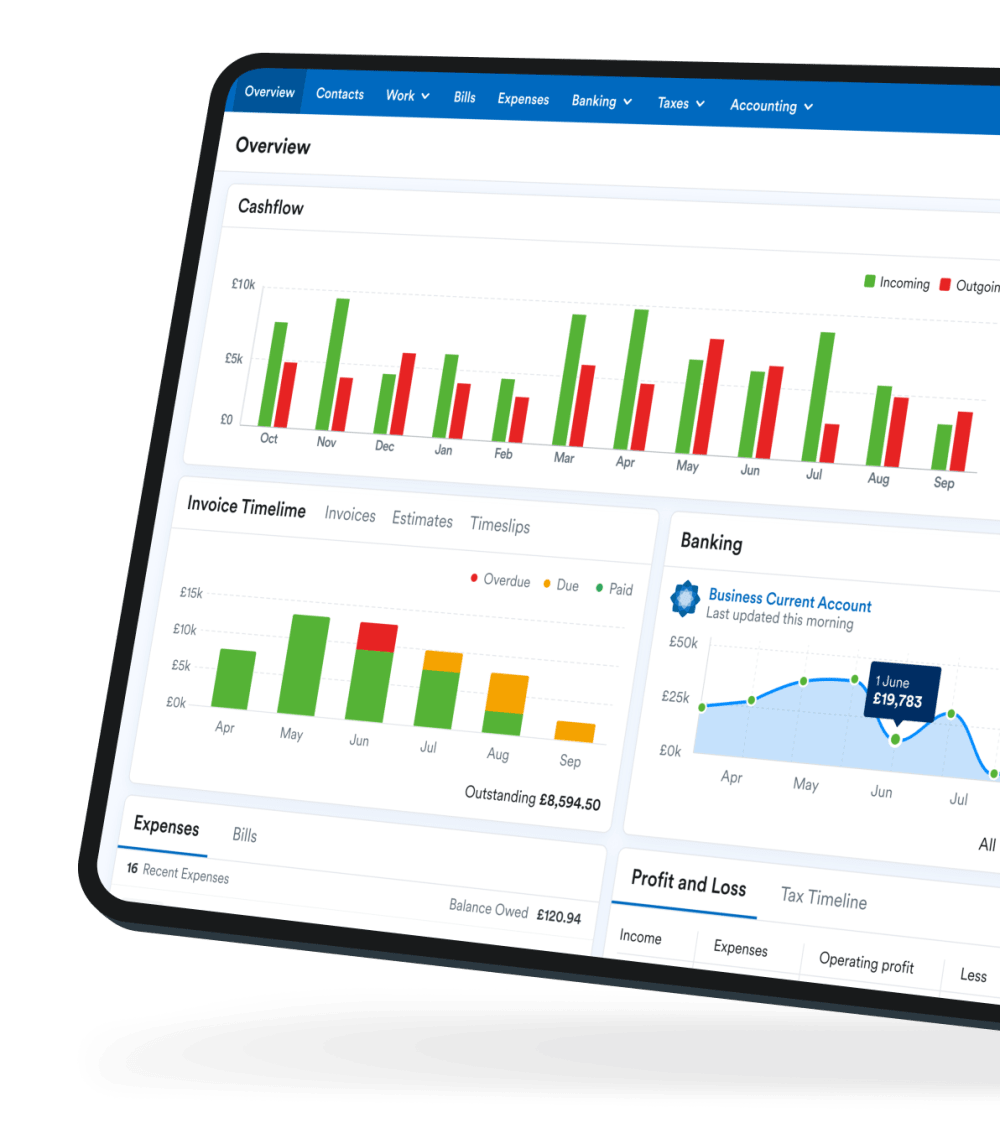
Say hello to FreeAgent!
Award-winning accounting software trusted by over 150,000 small businesses and freelancers.
FreeAgent makes it easy to manage your daily bookkeeping, get a complete view of your business finances and relax about tax.
Related articles
- A-Z of business expenses - for sole traders and limited companies
- Working from home? Learn what expenses you can claim if you use it for business
- Everything you need to know about Making Tax Digital
Are you an accountant or bookkeeper?
- Search Search Please fill out this field.
What Are Travel Expenses?
Understanding travel expenses, the bottom line.
- Deductions & Credits
- Tax Deductions
Travel Expenses Definition and Tax Deductible Categories
Michelle P. Scott is a New York attorney with extensive experience in tax, corporate, financial, and nonprofit law, and public policy. As General Counsel, private practitioner, and Congressional counsel, she has advised financial institutions, businesses, charities, individuals, and public officials, and written and lectured extensively.
:max_bytes(150000):strip_icc():format(webp)/MichellePScott-9-30-2020.resized-ef960b87116444b7b3cdf25267a4b230.jpg)
For tax purposes, travel expenses are costs associated with traveling to conduct business-related activities. Reasonable travel expenses can generally be deducted from taxable income by a company when its employees incur costs while traveling away from home specifically for business. That business can include conferences or meetings.
Key Takeaways
- Travel expenses are tax-deductible only if they were incurred to conduct business-related activities.
- Only ordinary and necessary travel expenses are deductible; expenses that are deemed unreasonable, lavish, or extravagant are not deductible.
- The IRS considers employees to be traveling if their business obligations require them to be away from their "tax home” substantially longer than an ordinary day's work.
- Examples of deductible travel expenses include airfare, lodging, transportation services, meals and tips, and the use of communications devices.
Travel expenses incurred while on an indefinite work assignment that lasts more than one year are not deductible for tax purposes.
The Internal Revenue Service (IRS) considers employees to be traveling if their business obligations require them to be away from their "tax home" (the area where their main place of business is located) for substantially longer than an ordinary workday, and they need to get sleep or rest to meet the demands of their work while away.
Well-organized records—such as receipts, canceled checks, and other documents that support a deduction—can help you get reimbursed by your employer and can help your employer prepare tax returns. Examples of travel expenses can include:
- Airfare and lodging for the express purpose of conducting business away from home
- Transportation services such as taxis, buses, or trains to the airport or to and around the travel destination
- The cost of meals and tips, dry cleaning service for clothes, and the cost of business calls during business travel
- The cost of computer rental and other communications devices while on the business trip
Travel expenses do not include regular commuting costs.
Individual wage earners can no longer deduct unreimbursed business expenses. That deduction was one of many eliminated by the Tax Cuts and Jobs Act of 2017.
While many travel expenses can be deducted by businesses, those that are deemed unreasonable, lavish, or extravagant, or expenditures for personal purposes, may be excluded.
Types of Travel Expenses
Types of travel expenses can include:
- Personal vehicle expenses
- Taxi or rideshare expenses
- Airfare, train fare, or ferry fees
- Laundry and dry cleaning
- Business meals
- Business calls
- Shipment costs for work-related materials
- Some equipment rentals, such as computers or trailers
The use of a personal vehicle in conjunction with a business trip, including actual mileage, tolls, and parking fees, can be included as a travel expense. The cost of using rental vehicles can also be counted as a travel expense, though only for the business-use portion of the trip. For instance, if in the course of a business trip, you visited a family member or acquaintance, the cost of driving from the hotel to visit them would not qualify for travel expense deductions .
The IRS allows other types of ordinary and necessary expenses to be treated as related to business travel for deduction purposes. Such expenses can include transport to and from a business meal, the hiring of a public stenographer, payment for computer rental fees related to the trip, and the shipment of luggage and display materials used for business presentations.
Travel expenses can also include operating and maintaining a house trailer as part of the business trip.
Can I Deduct My Business Travel Expenses?
Business travel expenses can no longer be deducted by individuals.
If you are self-employed or operate your own business, you can deduct those "ordinary and necessary" business expenses from your return.
If you work for a company and are reimbursed for the costs of your business travel , your employer will deduct those costs at tax time.
Do I Need Receipts for Travel Expenses?
Yes. Whether you're an employee claiming reimbursement from an employer or a business owner claiming a tax deduction, you need to prepare to prove your expenditures. Keep a running log of your expenses and file away the receipts as backup.
What Are Reasonable Travel Expenses?
Reasonable travel expenses, from the viewpoint of an employer or the IRS, would include transportation to and from the business destination, accommodation costs, and meal costs. Certainly, business supplies and equipment necessary to do the job away from home are reasonable. Taxis or Ubers taken during the business trip are reasonable.
Unreasonable is a judgment call. The boss or the IRS might well frown upon a bill for a hotel suite instead of a room, or a sports car rental instead of a sedan.
Individual taxpayers need no longer fret over recordkeeping for unreimbursed travel expenses. They're no longer tax deductible by individuals, at least until 2025 when the provisions in the latest tax reform package are due to expire or be extended.
If you are self-employed or own your own business, you should keep records of your business travel expenses so that you can deduct them properly.
Internal Revenue Service. " Topic No. 511, Business Travel Expenses ."
Internal Revenue Service. " Publication 463, Travel, Gift, and Car Expenses ," Page 13.
Internal Revenue Service. " Publication 5307, Tax Reform Basics for Individuals and Families ," Page 7.
Internal Revenue Service. " Publication 463, Travel, Gift, and Car Expenses ," Pages 6-7, 13-14.
Internal Revenue Service. " Publication 463, Travel, Gift, and Car Expenses ," Page 4.
Internal Revenue Service. " Publication 5307, Tax Reform Basics for Individuals and Families ," Pages 5, 7.
:max_bytes(150000):strip_icc():format(webp)/TaxHome-3b9f1ac36f6c4e28889c34943d991fc9.jpg)
- Terms of Service
- Editorial Policy
- Privacy Policy
- Your Privacy Choices
An official website of the United States government.
Here’s how you know
The .gov means it’s official. Federal government websites often end in .gov or .mil. Before sharing sensitive information, make sure you’re on a federal government site.
The site is secure. The https:// ensures that you are connecting to the official website and that any information you provide is encrypted and transmitted securely.
- American Rescue Plan
- Coronavirus Resources
- Disability Resources
- Disaster Recovery Assistance
- Equal Employment Opportunity
- Guidance Search
- Health Plans and Benefits
- Registered Apprenticeship
- International Labor Issues
- Labor Relations
- Leave Benefits
- Major Laws of DOL
- Other Benefits
- Retirement Plans, Benefits and Savings
- Spanish-Language Resources
- Termination
- Unemployment Insurance
- Veterans Employment
- Whistleblower Protection
- Workers' Compensation
- Workplace Safety and Health
- Youth & Young Worker Employment
- Breaks and Meal Periods
- Continuation of Health Coverage - COBRA
- FMLA (Family and Medical Leave)
- Full-Time Employment
- Mental Health
- Office of the Secretary (OSEC)
- Administrative Review Board (ARB)
- Benefits Review Board (BRB)
- Bureau of International Labor Affairs (ILAB)
- Bureau of Labor Statistics (BLS)
- Employee Benefits Security Administration (EBSA)
- Employees' Compensation Appeals Board (ECAB)
- Employment and Training Administration (ETA)
- Mine Safety and Health Administration (MSHA)
- Occupational Safety and Health Administration (OSHA)
- Office of Administrative Law Judges (OALJ)
- Office of Congressional & Intergovernmental Affairs (OCIA)
- Office of Disability Employment Policy (ODEP)
- Office of Federal Contract Compliance Programs (OFCCP)
- Office of Inspector General (OIG)
- Office of Labor-Management Standards (OLMS)
- Office of the Assistant Secretary for Administration and Management (OASAM)
- Office of the Assistant Secretary for Policy (OASP)
- Office of the Chief Financial Officer (OCFO)
- Office of the Solicitor (SOL)
- Office of Workers' Compensation Programs (OWCP)
- Ombudsman for the Energy Employees Occupational Illness Compensation Program (EEOMBD)
- Pension Benefit Guaranty Corporation (PBGC)
- Veterans' Employment and Training Service (VETS)
- Wage and Hour Division (WHD)
- Women's Bureau (WB)
- Agencies and Programs
- Meet the Secretary of Labor
- Leadership Team
- Budget, Performance and Planning
- Careers at DOL
- Privacy Program
- Recursos en Español
- News Releases
- Economic Data from the Department of Labor
- Email Newsletter
Travel Time
Time spent traveling during normal work hours is considered compensable work time. Time spent in home-to-work travel by an employee in an employer-provided vehicle, or in activities performed by an employee that are incidental to the use of the vehicle for commuting, generally is not "hours worked" and, therefore, does not have to be paid. This provision applies only if the travel is within the normal commuting area for the employer's business and the use of the vehicle is subject to an agreement between the employer and the employee or the employee's representative.
Webpages on this Topic
Handy Reference Guide to the Fair Labor Standards Act - Answers many questions about the FLSA and gives information about certain occupations that are exempt from the Act.
Coverage Under the Fair Labor Standards Act (FLSA) Fact Sheet - General information about who is covered by the FLSA.
Wage and Hour Division: District Office Locations - Addresses and phone numbers for Department of Labor district Wage and Hour Division offices.
State Labor Offices/State Laws - Links to state departments of labor contacts. Individual states' laws and regulations may vary greatly. Please consult your state department of labor for this information.
An official website of the United States Government
- Kreyòl ayisyen
- Search Toggle search Search Include Historical Content - Any - No Include Historical Content - Any - No Search
- Menu Toggle menu
- INFORMATION FOR…
- Individuals
- Business & Self Employed
- Charities and Nonprofits
- International Taxpayers
- Federal State and Local Governments
- Indian Tribal Governments
- Tax Exempt Bonds
- FILING FOR INDIVIDUALS
- How to File
- When to File
- Where to File
- Update Your Information
- Get Your Tax Record
- Apply for an Employer ID Number (EIN)
- Check Your Amended Return Status
- Get an Identity Protection PIN (IP PIN)
- File Your Taxes for Free
- Bank Account (Direct Pay)
- Payment Plan (Installment Agreement)
- Electronic Federal Tax Payment System (EFTPS)
- Your Online Account
- Tax Withholding Estimator
- Estimated Taxes
- Where's My Refund
- What to Expect
- Direct Deposit
- Reduced Refunds
- Amend Return
Credits & Deductions
- INFORMATION FOR...
- Businesses & Self-Employed
- Earned Income Credit (EITC)
- Child Tax Credit
- Clean Energy and Vehicle Credits
- Standard Deduction
- Retirement Plans
Forms & Instructions
- POPULAR FORMS & INSTRUCTIONS
- Form 1040 Instructions
- Form 4506-T
- POPULAR FOR TAX PROS
- Form 1040-X
- Circular 230
Here’s what taxpayers need to know about business related travel deductions
More in news.
- Topics in the News
- News Releases
- Multimedia Center
- Tax Relief in Disaster Situations
- Inflation Reduction Act
- Taxpayer First Act
- Tax Scams/Consumer Alerts
- The Tax Gap
- Fact Sheets
- IRS Tax Tips
- e-News Subscriptions
- IRS Guidance
- Media Contacts
- IRS Statements and Announcements
IRS Tax Tip 2022-104, July 11, 2022
Business travel can be costly. Hotel bills, airfare or train tickets, cab fare, public transportation – it can all add up fast. The good news is business travelers may be able to off-set some of those costs by claiming business travel deductions when they file their taxes.
Here are some details about these valuable deductions that all business travelers should know.
Business travel deductions are available when employees must travel away from their tax home or main place of work for business reasons. The travel period must be substantially longer than an ordinary day's work and a need for sleep or rest to meet the demands the work while away.
Travel expenses must be ordinary and necessary. They can't be lavish, extravagant or for personal purposes.
Employers can deduct travel expenses paid or incurred during a temporary work assignment if the assignment length does not exceed one year.
Travel expenses for conventions are deductible if attendance benefits the business and there are special rules for conventions held outside North America .
Deductible travel expenses while away from home include the costs of:
- Travel by airplane, train, bus or car between your home and your business destination.
- Fares for taxis or other types of transportation between an airport or train station to a hotel, from a hotel to a work location.
- Shipping of baggage and sample or display material between regular and temporary work locations.
- Using a personally owned car for business which can include an increase in mileage rates .
- Lodging and non-entertainment-related meals .
- Dry cleaning and laundry.
- Business calls and communication.
- Tips paid for services related to any of these expenses.
- Other similar ordinary and necessary expenses related to the business travel.
Self-employed or farmers with travel deductions
- Those who are self-employed can deduct travel expenses on Schedule C (Form 1040), Profit or Loss From Business (Sole Proprietorship) .
- Farmers can use Schedule F (Form 1040), Profit or Loss From Farming .
Travel deductions for the National Guard or military reserves
National Guard or military reserve servicemembers can claim a deduction for unreimbursed travel expenses paid during the performance of their duty .
Recordkeeping
Well-organized records make it easier to prepare a tax return. Keep records, such as receipts, canceled checks, and other documents that support a deduction.
More information:
- Publication 463, Travel, Gift, and Car Expenses
- IRS updates per diem guidance for business travelers and their employers
Subscribe to IRS Tax Tips

Allowable travel expenses when working from home
Case law identifies when individuals can make claims for travelling between places of work because this can be a minefield, but one in which HM Revenue and Customs takes an acute interest, writes Vanessa Sanders.

When employees work at home full time, the employer should be able to re-imburse any work travel as free from tax.
It becomes less clear for those who work at home and other regular places of work.
Unless the employee is required to start work at home and then travel to another site, travel between home and work is usually classed as ordinary commuting and so is not allowed to be re-imbursed tax-free.
This is because there is a dual purpose to any journey between home and work – that purpose is to live away from work.
HMRC provides some examples of when travel can be treated as tax-free or claimed in a tax return and when it cannot.
If you re-imburse travel, it should be either as a direct re-imbursement supported by receipts for public transport; and at 45p per mile (first 10,000 miles) and 25p thereafter, supported by petrol receipts and a travel log when travelling by car.
Vanessa Sanders is a partner with Stanbridge Associates, accountancy, finance and tax advisory medical specialists
- ‘ Health and safety when working from home ’
- ‘ The rules on expenses when working from home ’
Privacy Overview

- Tax Pro Center | Intuit
- Blog Post Archive
- Tax Law and News
What is a Tax Home, and How Does it Impact Travel Expenses?

Share this:
- Click to share on Twitter (Opens in new window)
- Click to share on Facebook (Opens in new window)
- Click to share on LinkedIn (Opens in new window)
Written by Liz Farr, CPA
- Modified Aug 8, 2019
Today’s super-mobile workforce means that you may have clients who are splitting their time between multiple work locations. In these situations, understanding the concept of a tax home will help clarify the treatment of travel expenses.
What is a Tax Home?
The IRS defines a tax home as the city or general area where someone’s main place of business or work is located. If your client travels away from their tax home for work purposes, their travel expenses may be deductible.
“May be deductible” has taken on new meaning since the Tax Cuts and Jobs Act was passed in late 2017. Under prior law, employees could deduct unreimbursed work expenses, including travel expenses, as a miscellaneous itemized deduction. However, from 2018 though 2025, that deduction has been suspended, except for Armed Forces reservists, qualified performing artists, and fee-basis state or local government officials.
The best bet for employees who no longer qualify to deduct their travel expenses is to set up an accountable plan with their employer. Reimbursed travel expenses under an accountable plan are not taxable to the employee, while reimbursements under a non-accountable plan are included in the employee’s wages.
However, self-employed individuals can still deduct expenses for travel away from their tax home as business expenses.
A tax home may or may not be the same place as the family home, or a place that your client returns to regularly. For clients who work in more than one place, their tax home is their main place of business or work. This is determined by considering the following factors:
- The total time spent in each place.
- The level of business or work activity in each place.
- The relative amount of income earned in each place.
Expenses for work-related travel away from someone’s tax home are deductible or can be reimbursed tax-free under an accountable plan. Travel expenses include transportation, meals, lodging, laundry and dry cleaning, and incidentals.
For example, Ryan is a self-employed consultant living in Denver. He spends one week of every month working onsite for a client in Salt Lake City. Ryan spends the remaining three weeks of the month working with clients in the Denver area. Ryan’s tax home is Denver, so his travel, lodging and meal expenses for his monthly trips to Salt Lake City are deductible.
Over time, Ryan’s client in Salt Lake City becomes a bigger part of his work. Eventually, Ryan is spending all of his working time in Salt Lake City and flying home to Denver on the weekends. Now, his tax home is Salt Lake City, and neither his living expenses in Salt Lake City nor his plane fare between Denver and Salt Lake City are deductible.
What About Temporary Work Assignments?
It’s not unusual for an employee to be sent to work in a different location. If that assignment is temporary and the employee maintains a home in the original location, the tax home is still the original location. Travel expenses will be deductible for a contractor. Employee reimbursements under an accountable plan will be tax-free.
But, if the assignment is permanent or indefinite, then the person’s tax home is the new location, so travel expenses are not deductible. Accountable plan reimbursements are now taxable to the employee.
The IRS defines “temporary” as a work assignment that’s expected to last a year or less. If a work assignment that started out as a temporary posting is extended to more than a year, then it becomes an indefinite assignment when the anticipated duration changes.
For example, Kimberly has been working for a company in Boston and is sent to Los Angeles for an eight-month project. Kimberly’s tax home is still Boston. Her employer reimburses her for her travel, lodging and meals under an accountable plan, and those reimbursements are tax-free.
However, seven months into the project, Kimberly’s employer decides to extend her posting in Los Angeles for another eight months, to a total of 15 months. At that point, Kimberly’s assignment becomes indefinite, so her tax home changes to Los Angeles. If her employer continues to reimburse her for living expenses, even if it’s done under an accountable plan, those reimbursements are now taxable.
This only scratches the surface of the tangled web that results when people live and work in multiple locations. Depending on the states involved, your clients may also have state tax issues. IRS Publication 463 , Travel, Gift, and Car Expenses , is a good resource, so be sure to check it out if you have clients in this situation.
Editor’s note: This article was published on the Firm of the Future blog .
Previous Post
What to Tell Your Clients About Tax Return Privacy
Key Tax Developments for 2019
Liz spent 15 years working as an accountant with a focus on tax work as well as working on audits, business valuation, and litigation support. Since 2018, she’s been a full-time freelance writer, and has written blog posts, case studies, white papers, web content, and books for accountants and bookkeepers around the world. Her current specialty is ghostwriting for thought leaders in accounting. More from Liz Farr, CPA
Comments are closed.
Browse Related Articles

Last Crack at Lower Medical Expense Deduction Floor

What your clients need to know about business-related t…
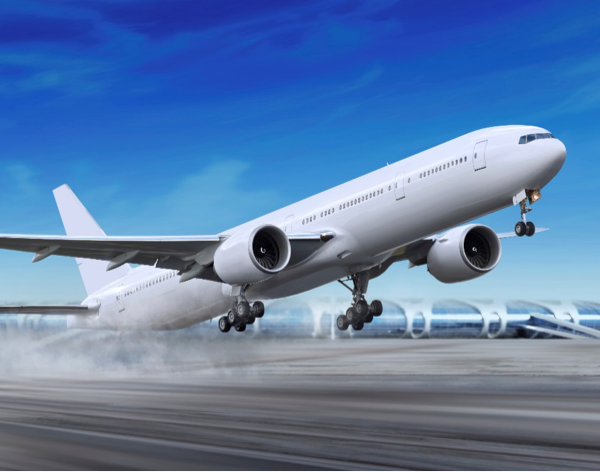
Travel-Related Tax Tips for Your Self-Employed Clients

Tax Tips for Real Estate Professionals Who Are Self-Emp…

Tax Reform Makes Changes to the Meals and Entertainment…

Share These 11 Lesser-Known Tax Deductions With Your Cl…
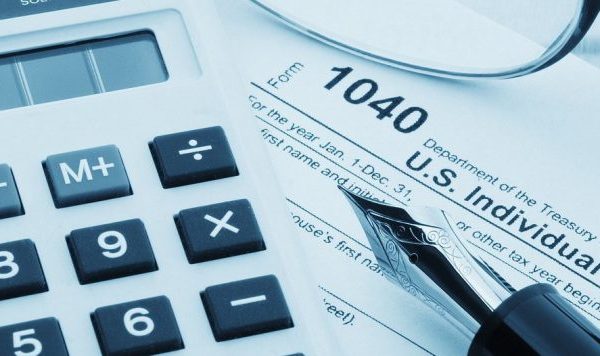
Top 10 Surprising Tax Deductions

IRS Updates Per-Diem Guidance for Business Travelers an…

15 must-see tax breaks for small business owners in 202…

How to deduct business expenses while on vacation
If you work primarily from home, your trips to the office could be tax deductible
Court sides with beauty company employee who had to drive from her home office in Pickering to head office in Oakville
You can save this article by registering for free here . Or sign-in if you have an account.
Reviews and recommendations are unbiased and products are independently selected. Postmedia may earn an affiliate commission from purchases made through links on this page.
Article content
While some of us continue to work from home during COVID-19, others don’t have that flexibility and commute daily to and from the office. While in the past, many may have taken public transit to get to work, since the pandemic hit, the fear of taking mass transit has caused some daily commuters to begin driving to work, raising the question as to whether any of these commuting expenses may be tax deductible.
Subscribe now to read the latest news in your city and across Canada.
- Exclusive articles from Barbara Shecter, Joe O'Connor, Gabriel Friedman, Victoria Wells and others.
- Daily content from Financial Times, the world's leading global business publication.
- Unlimited online access to read articles from Financial Post, National Post and 15 news sites across Canada with one account.
- National Post ePaper, an electronic replica of the print edition to view on any device, share and comment on.
- Daily puzzles, including the New York Times Crossword.
Create an account or sign in to continue with your reading experience.
- Access articles from across Canada with one account.
- Share your thoughts and join the conversation in the comments.
- Enjoy additional articles per month.
- Get email updates from your favourite authors.
Sign In or Create an Account
Generally speaking, the Canada Revenue Agency considers the cost of driving back and forth between home and work as a personal expense. But, what if your main place of employment is actually your home office and you only occasionally visit your employer’s place of business, but don’t have a regular work spot there? That was the issue in a tax case decided last month.
If you work primarily from home, your trips to the office could be tax deductible Back to video
The general rule.
Before getting into the details of the case, let’s review the general rule surrounding the deductibility of automobile expenses by employees. If you’re an employee who uses your car for work, you may be able to deduct some of your automobile expenses on your tax return, assuming you meet certain conditions. First, you must normally be required to work away from your employer’s place of business or in different places. Second, under your contract of employment, you must be required to pay your own automobile expenses and this must be certified by your employer on a signed copy of the Canada Revenue Agency’s Form T2200, Declaration of Conditions of Employment. Finally, to claim vehicle expenses, you must not be the recipient of a “non-taxable” allowance for motor vehicle expenses.
Get the latest headlines, breaking news and columns.
- There was an error, please provide a valid email address.
By signing up you consent to receive the above newsletter from Postmedia Network Inc.
A welcome email is on its way. If you don't see it, please check your junk folder.
The next issue of Top Stories will soon be in your inbox.
We encountered an issue signing you up. Please try again
If your employer does provide you with an allowance but you feel that the amount you received was not reasonable to cover the actual operating costs of your vehicle, you can deduct the “work” portion of your actual vehicle operating expenses, provided any employer vehicle allowance paid to you is included in your income. To justify your motor vehicle expense claim, it’s important to keep proper records of the kilometres driven for work versus those driven for personal use.

The issue in the recent case was not the quantum of automobile expenses claimed — some $12,868 in 2015 — but rather whether the expenses were deductible at all. The taxpayer, an employee of a global beauty company that manufactures and sells cosmetics, was reassessed by the CRA for attempting to deduct vehicle travel expenses she had claimed for driving between the location of her home office, located in Pickering, Ont., and her employer’s principal place of business, located in Oakville, a one-way distance of 72 kilometres.
The sole question before the Tax Court was whether her expenses “were incurred for travelling in the course of … employment.” The taxpayer maintained that the travel at issue was, indeed, employment travel, as it was between two places of her employment (one being her home office.) The CRA, following its longstanding administrative position, felt that the taxpayer’s driving between her employer’s place of business in Oakville and her home should be considered personal travel and not employment travel.
The taxpayer’s employer provided her with a duly-completed Form T2200 for the 2015 taxation year, signed by her employer’s chief financial officer. The form attested to the fact that her employment contract required her to use a portion of her home for work, and that the percentage of her employment duties performed from home was 90 per cent.
The taxpayer testified that she worked daily from her home office, speaking with customers and potential customers, as well as with members of her sales team. This would account for the 90 per cent of her employment work referred to on the T2200. She would also meet with customers time to time by driving to their locations from her Pickering home office.
Occasionally, the taxpayer was required to travel to her employer’s Oakville office for “one-on-one” meetings with her boss, meetings with the entire marketing team and “town hall” meetings organized by the company for all its employees across the country and beyond. The taxpayer did not have her own office or workstation at the Oakville office and when she did need a place to work when she was there (typically before or after the particular function that required her to be there), she would either use the boardroom, if it was empty, or her boss’s office, if available.
Her required trips to the Oakville office were more frequent during times of spring and fall planning when new beauty products would be introduced to the Ontario market. The taxpayer also testified that she never worked from the Oakville office on a “9-to-5 basis,” rather attended there “irregularly and for one- or two-hour visits.”
In his analysis, the judge referred to a 2003 case involving employment travel, which concluded that the cost of travel by employees between two employment-related locations was not personal travel but rather was considered properly tax deductible as employment-related automobile travel. As the judge in that case wrote, “The evidence established beyond any doubt that when they left their offices in their homes and went to some other place to conduct business they were going from one place of business to another place of business and they did so when they were returning to their home offices. The Court does not consider it significant that after they came home they might have gone to bed or turned on the TV or had a sandwich or raided the refrigerator, whatever the case may be. That does not militate against a finding that they were involved in business related activities on the way home.”
The judge in the current case therefore concluded that the employee’s automobile expenses should be fully deductible since the taxpayer’s T2200 clearly indicated that she was required to work from a home office and specified that 90 per cent of her work was to be performed from there. In addition, it was clear that the taxpayer did not have appropriate office facilities available for her at her employer’s Oakville location.
Jamie Golombek, CPA, CA, CFP, CLU, TEP is the Managing Director, Tax & Estate Planning with CIBC Private Wealth Management in Toronto.
Postmedia is committed to maintaining a lively but civil forum for discussion. Please keep comments relevant and respectful. Comments may take up to an hour to appear on the site. You will receive an email if there is a reply to your comment, an update to a thread you follow or if a user you follow comments. Visit our Community Guidelines for more information.
Why the smart money is buying single-family homes
Meet nvidia's canadian secret weapon, gold could go as high as $3,000, forecasters say, young canadians think retiring at 65 is an outdated concept, howard levitt: even google, once a leader among the woke, is waking up.
This website uses cookies to personalize your content (including ads), and allows us to analyze our traffic. Read more about cookies here . By continuing to use our site, you agree to our Terms of Service and Privacy Policy .
You've reached the 20 article limit.
You can manage saved articles in your account.
and save up to 100 articles!
Looks like you've reached your saved article limit!
You can manage your saved articles in your account and clicking the X located at the bottom right of the article.
More From Forbes
If you work from home, here’s 6 tips to create the perfect wfh office.
- Share to Facebook
- Share to Twitter
- Share to Linkedin
The right workspace is comfortable, personal, and ergonomic.
The widespread work from home movement was born of necessity during COVID-19. According to the U.S. Census Bureau , between 2019 and 2021, the number of people primarily working from home tripled — from 9 million to 27.6 million. Years later, working from home continues to be a way of life with some still at home on a full-time basis, and millions more engaging in a hybrid model, dividing their time between home and office work.
Working remotely provides the opportunity to live almost anywhere, allowing renters and homeowners alike to move out of expensive cities and into more affordable regions — and some buyers are even rejecting suburban McMansions in favor of minimalist, simple-sized homes that require less upkeep and provide more peace and quiet.
Another advantage of working from home: commute time savings. A report by the National Bureau of Economic Research reveals that globally, people who work from save an average of 72 minutes a day that would have been spent commuting (in the U.S. the average daily commute time is 55 minutes). Working from home also results in less wear and tear on vehicles, and reduces clothing costs – and this extra money will come in handy now that they need a six-figure salary to comfortably afford a home .
Admittedly, some companies are beckoning their employees back to work, even though a report by Hubstaff reveals that remote workers experience fewer interruptions and spend more time on focused tasks, compared to office workers (22.75 hours/week versus 18.6 hours/week).
Photo courtesy of
The Best Romantic Comedy Of The Last Year Just Hit Netflix
Apple iphone 16 unique all new design promised in new report, the world s best beers according to the 2024 world beer cup.
A home office, or a space that can be used for a home office, is now a feature that both homeowners and potential buyers consider an advantage. I previously covered the most popular home projects , according to the 2024 Houzz and Home Study, and in 2023, homeowners spent 6.6 months planning how they would renovate their home offices, and an additional 3 months on actual home office construction/remodeling. On average, survey respondents spent $2,000 renovating a space to convert it into a home office.
“Working from home can be super relaxing — sometimes even a little too relaxing,” says New York City interior designer Emma Beryl . However, she tells me that creating the perfect WFH space can help you stay motivated and get your work done.
But this entails more than just a cool design and stylish items to make your home office look good. “Proper home ergonomics can help prevent degenerative disc problems at L5 from prolonged sitting with a poor work setup" explains Dr. Allen Conrad at the Montgomery County Chiropractic Center in North Wales, Pennsylvania. "With a proper ergonomic home workspace setup, you can help prevent degenerative spine conditions which could lead to painful sciatica,” he says.
Whether you want to renovate, or just furnish and decorate your office space, these are some helpful tips to create the perfect WFH environment.
If you’re building or renovating your home, Jay Kallos, SVP of architecture at Ashton Woods in Atlanta, Georgia, recommends putting the home office in a quiet, remote part of your home. “In new construction, you can add sound insulation to aid in creating a quiet sanctuary,” he says. However, Kallos advises against using a barn door if you need to keep noise out of the office (although it’s fine if noise is not a problem).
One of his personal preferences is to use daylight to help keep track of time, but window placement is crucial. “If your office is in the front of your home, I recommend a window on the side or rear of the office – but not in the front, because you could be distracted by what is going on in front of your house.”
Ariana Lovato, owner and principal designer at Honeycomb Home Design in Arroyo Grande, California, agrees that distractions should be kept to a minimum. “The best case scenario would be to dedicate a spare bedroom to your work space so you can close the doors and have privacy for phone calls and meetings, but for most, space is limited, and usually work from home happens in a small corner of a living room.”
Design Look
But if you have space to create separation, Leigh Spicher, Orlando, Florida-based national director of design studios for Ashton Woods , tells me that similar to the concept that bedrooms are for sleeping (and other stuff) only, home office spaces are for work only.
“Thoughtful design can ensure this space is free from the stress of mixing work with family time,” she says. “Move the home office out of a secondary bedroom or the dining room into a dedicated space that is for work only.” And Spicher likes a space with doors that you can close either when you’re working or when you’ve closed up shop for the day.
Christopher Grubb is an interior designer and the founder of Beverly Hills-based Arch-Interiors Design Group. “The majority of the time, we approach the design of a workspace to have a much different look from the home to create the psychological effect that you have ‘gone to work,’” he tells me.
Before the pandemic, Grubb says the emphasis in a workspace was to create as little clutter as possible, based on the theory that without a lot of stuff, people could focus and not be distracted. “But now, we have exceptions of the clients that want dramatic wallpaper that they say gives them energy for the workday, and an appreciation of accessories they can look at while on calls, which make them feel happy and more relaxed.”
Also, during the pandemic, some people worked outdoors in the fresh air and post-pandemic, exterior workspaces are still popular. “For them, we install in-deck waterproof power and data outlets underneath an outdoor dining table used as a desk,” Grubb says. “We also install outdoor waterproof outlets with USB connections at outdoor cooking areas or seating zones, which are also ideal for a guest who wants to charge a device.” In fact, his firm has even used motorized outdoor umbrellas that include lighting and heat at the dining table ‘desks.’
Functionality
You want a stylish office, but functionality is also important. “The Europeans included it for years, but the American market now appreciates efficient and versatile organizational details in drawers and in cabinetry,” Grubb says. For example, he says printers and shredders can be hidden in furniture with slide-out shelves.
“If you do have a built-in, make sure to get extra shelves, which provides the possibility to store smaller items, instead of having objects stacked awkwardly high because of fewer shelves.” And if you don’t use the extra shelves, Grubb says you can just put them in the bottom of the cabinet, but this is much easier than trying to order additional shelves later.
Beryl also likes the idea of furniture as storage. “I recommend a cabinet or credenza for storage options to keep clutter off your work surface so it can remain stylish and organized,” she says.
Interior designer Tama Bell in Sebastopol, CA, tells me that she likes to use a large desk or table with beautiful lines for the main work station. “There is nothing that makes working from home harder than not enough space to spread out.” Bell often uses an L-shaped configuration with some type of console with file storage. “I find that when it is easy to file as one works, it helps to keep things looking tidy and functioning well, and it also allows for a second surface for your computer or laptop.”
In addition, she likes a pair of tall bookcases, within easy access of the desk area. “This is used to store all the necessary working items that one needs, but to also decorate or style with photos, books and accessories.” Bell says that having a space that is personal and beautiful makes working from home a happy necessity.
According to Grubb (and confirmed by many awful virtual meetings), most workspaces are not conducive for audio and video calls and they also tend to have an echo. “A go-to is an area rug on tile or wood floors, which provides one layer that absorbs sound.” He’s also using more decorative acoustical panels with a thick felt-like quality, and they’re available in solids, shapes or a material that looks like it’s woven, and other dramatic effects. “The panels come in a variety of colors, and the acoustical paint is white, and any color can be painted over it.” Grubb explains that blue tones tend to work best behind the person on a call. “It is a peaceful color, gender-neutral, and gives the viewer a nicer feeling than a cold gray.”
Here’s another tip: Grubb reveals that the more soft surfaces you have (including upholstered furniture or drapery), the more sound absorption in the room. “One client even opens closet doors that have clothes hanging in them to absorb noise when they are on calls,” he says.
Lighting is also an important WHF office component, as the right light can help to prevent eye strain. “Light rings are a must, and most rooms have downlights or a chandelier as the light source,” Grubb says. “Put all of your lighting in a room on a dimmer to control the intensity and avoid a ‘hotspot’ on top of your head during a video call.” If you have windows, he says the natural light is excellent for its wellness quality. “And we like using motorized shades that are on a remote control and operate from a battery pack to give you additional control of the natural lighting coming in.”
Beryl recommends placing the home office in a space by a natural light source if possible. “You want to be able to choose if you close the curtains or blinds to limit light, or keep them open to let the sunlight in,” she says. “If you work in a dark space, the second you step out into a room with sunlight, your eyes are going to feel tired.”
Lovato adds that it’s important to invest in a comfortable chair and a large monitor so you can work comfortably. Dr. Allen Conrad at the Montgomery County Chiropractic Center in North Wales, Pennsylvania agrees, noting that the right ergonomic workspace can lead to reduced pain and less eye strain headaches.
“Many of these problems arise from a poor WFH ergonomic computer workspace — which may have begun out of necessity, but if working from home is something that will be part of your regular routine, then it’s time for proper ergonomics.”
For example, if you’re sitting in a chair that’s too low, Conrad says it will cause you to lean forward more than usual. “This can lead to neck or back strain, and limit how long you can be on the computer doing work.” Depending on your height, if you have a taller chair, he says you may need a shorter desk, and if you have a shorter chair, he says you may need to raise the monitor to accommodate it.
“When you can sit longer without pain, you can get more done, since less strain on the back and shoulders will allow you to sit for longer periods of time and not lose your train of thought,” Conrad explains.
Dr. Sapna Sriram, chiropractor and injury expert at Integra Health Centre in Toronto, Ontario, recommends using adjustable standing desks or standing desk converters, as they offer a range of benefits:
Improved Posture: “Standing encourages better posture as it reduces the likelihood of slouching and promotes a more upright position, reducing strain on the spine,” Sriram says.
Enhanced Ergonomics: The ability to adjust the height of an adjustable standing desk or standing desk converter lets you customize your workspace for optimal ergonomic comfort, and Sriram says this reduces the risk of musculoskeletal problems.
Increased Energy and Productivity: “Standing can boost blood circulation and energy levels, potentially leading to increased productivity and focus during work hours,” Sriram explains,
Reduced Health Risks: “Prolonged sitting has been associated with various health risks, including obesity, cardiovascular issues, and back pain,” Sriram warns. However, she says that using a standing desk or standing desk converter can help mitigate these risks by reducing sedentary behavior.
These are some of the items that can help you create a stylish, comfortable, and ergonomic office space.
Adjustable Standing Desk
Photos courtesy of
The Eureka Ergonomic Two-Drawer Electric Standing Desk has a genuine leather finish. The quiet dual-motor lift system can increase the desk’s height from 34 to 52 inches. The desktop is 55 inches in length by 23.6 inches wide and has a maximum weight capacity of 220 pounds. It includes a built-in outlet, built-in USB port, wireless charger, two drawers, and a movable monitor shelf.
If you’re looking for a smaller option, the Burrow Copilot Standing Desk is 27 inches in length and 43 inches in width, and has a height range of 28.5 to 48 inches. The desk drawer is large enough to hold a 17-inche laptop, keyboard, and mouse, and the desk also has a cord organization compartment on top, as well as a 6-inch monitor mount opening on the back. The solid beech desk, which has a weight capacity of 300 pounds, is available in walnut and oak.
Ergonomic Chair
The Humanscale Freedom Task Chair is unique in that it doesn’t need a lot of levers or dials. It has a dynamic headrest, self-adjusting recline, and synchronous arms attached to the back of the chair. Everything works together to automatically adjust to body weight and seated position. The one lever on the chair is used to adjust the height from 34.6 inches to 41.7 inches. The chair, which has a weight capacity of 400 pounds, is available in leather, woven upholstery, and knit, and in several textile colors.
The X4 Leather Executive Chair is available with or without an headrest, and it also includes optional massage options, such as a heat and massage insert, or a cooling, heat and massage insert. The chair comes standard with 4D arms, but you can choose 360-degree rotating arms instead. The seat’s height can be adjusted from 18.5 to 22.5 inches and the seat depth can be adjusted as well. Maximum weight capacity is 275 pounds. Leather color options include cognac, black, brown, red, and white.
Available in mesh, digital knit or leather, the Haworth Zody Office Chair has a dual posture option that supports you whether sitting down or in a perch position (partially-standing and partially sitting), which is common with adjustable standing desks. It comes with an optional lumbar adjustment system. Both the seat height and seat depth can be adjusted, and the chair also has a forward tilt, tilt tension, and back stop. It has a weight limit of 400 pounds.
The Serene Executive Napa Leather Office Chair is made of full-grain Napa leather, available in black, off-white, black/red, and orange. The headrest has an arc-shape that gently supports the neck and head while relieving pressure. Also, the three-dimensional lumbar pillow supports the spine and eases lower back fatigue. The chair reclines from 90 to 135 degrees, and the seat height and depth are adjustable as well. The weight limit is 300 pounds.
External Monitor
If you like to keep dozens of folders open on your desktop, the Innocn 34” OLED Curved Ultrawide Monitor has plenty of screen real estate and is also large enough to keep you from having to squint. The WQHD monitor has a 175Hz refresh rate, and it can tilt, swivel, and includes a height-adjustable stand — although it can also be wall mounted. There are several inputs, including two HDMI 2.0, DP1.4, two USB-A 3.0, USB-B 3.0, Type-C 65W, and audio out. The monitor also has a 15W phone charging pad.
Another option is the QHD MSI 27" Gaming Monitor , which has a 16:9 aspect ratio, and a LCD panel with LED backlight. It also has a 165Hz refresh rate, and a 1ms response time, which makes it a good choice for gaming as well. The curved monitor also has a tilt adjustment feature. Hardware interface includes HDMI, and DisplayPort.
Portable Monitor
Portable monitors are an alternative to external monitors. They provide the advantage of being easy to transport, so you can also toss them in your laptop bag when traveling. The FHD ASUS ZenScreen Ink 14" Portable Monitor is a touch screen monitor with a stylus pen (with 4096 level pressure sensitivity). It has an integrated stand, along with two USB-C and one micro-HDMI input.
The generous size of the Espresso 17 Pro Portable Monitor and Stand can make it easy to add a second screen to your laptop, smartphone, or tablet. The touch screen monitor has 4K resolution, 450 nits of brightness, and 1.07 billion colors. It’s also ultra-light, weighing 2.4 pounds and is only 0.35 inches thick. The monitor includes a USB-C cable, but also has ports for HDMI, and mini DisplayPort. The display stand, which attaches magnetically, can be adjusted as needed.
Dual Portable Monitor
Dual monitors are a way to extend your laptop screen even more. The 1080p KYY 14" Dual Monitor attaches on both sides of your laptop (and has a built-in kickstand), for a total of three screens. In addition to extended mode, the dual monitor setup can be used in portrait or presentation mode. The IPS LCD monitor is compatible with 12-inch to 16-inch laptops and has a low blue light feature. It comes with a Type-C to Type-C/USB-A Cable and a Type-C to USB-A cable.
Another dual monitor option, The Portable Monitor Flex 14” has two 14-inch LED screens (1920 x 1080), 300 nits of brightness, and a 60Hz refresh rate. The thin and feather-light monitor is easy to swivel 180 degrees and it can be used in both portrait and vertical mode, as well as in presentation mode. The integrated stand is also adjustable to 90 degrees. The monitor includes a USB-C to USB-C cable, and a USB-C to USB 3.0/2.0 cable.
Standing Desk Converter/Portable Table
In lieu of an adjustable standing desk, you can use your existing desk and put the Flexispot Standing Desk Converter on top of it. Available in a variety of sizes ranging from 32 inches to 42 inches, it can be used on standard, L-shaped, and compact desks. The desk converter can adjust in height from 5.7 inches to 19.7 inches, and has room for your laptop and monitor(s) on top, and your keyboard on the second shelf.
For those times when you want to sit on the sofa, the Haworth Elements 4-Function Table can be used to hold your laptop — either horizontally as a lap table, or vertically as an end table (and you can also use it as a standing desk converter to make your desk taller, or as an ottoman for your feet). It’s made of laser-cut solid steel with a powder coat-finish, available in charcoal, smooth plaster, desert rose, terra cotta, moss, and stone. The table in 24.5 inches in height, 15.5 inches, and 11.74 inches in depth.
To bring your monitor to eye level, the Vari Desk Shelf is a modern desk riser that’s 4 inches tall. It’s also 40 inches wide, with enough space to hold two monitors. The matte black shelf, which has a 50-pound weight capacity, can also hold other desk accessories neatly and out of the way.
If you prefer more color choices, Grovemade Desk Shelf is available in matte black, solid walnut, solid maple, solid oak, matte blue, blackened walnut, oak plywood, walnut plywood, maple plywood, and matte white. The desk shelf comes in small, medium, large, and extra-large sizes, and with and without a desk tray. Each shelf supports monitors up to 50 pounds.
The Energy Star-certified Humanscale Nova Task Light has a customized optical lens to reduce glare, and counterbalance arms that rotate 180 degrees. It uses only 7 watts to produce a 3000k (warm) to 4000k (cool) temperature range. The light has touch dimming and occupancy sensor to turn off 15 minutes after no presence has been detected. Color choices include jet black, light gray, and arctic white.
If you prefer a floor standing option, the Dyson Solarcycle Floor Lamp can be used as a task light at your desk to reduce eye strain, but you can also rotate the optional head when soft background light is preferred. It can also be used to create indirect light, and feature lighting. In addition, the magnetic docking system can emit a soft, orange glow when you want ambient light. The lamp, which has a light output of 850 lumens, can be controlled manually or via the MyDyson app. It’s available in black, black/brass, and white/silver
Mouse/Keyboard
The Logitech MX Master 3S Wireless Mouse has an ergonomic silhouette that’s designed to provide support for your fingers and palm, and the tilt angle creates a more natural posture. It’s wireless, and a full charge can last for 70 days, while a 1-minute charge lasts for 3 hours. Color choices are graphite, pale gray, and black.
The Logitech MX Keys S Keyboard is an ergonomically-design wireless keyboard with spherically-dished keys for an efficient and comfortable typing experience. A full charge lasts for 10 days, and the ambient light sensors can adjust the brightness of the backlighting. The keyboard comes in three colors: black, graphite, and pale gray.
A desk pad can instantly make your desk look better, and also protect it from scratches and spills. The Harber London Leather Desk Mat is made of 100% full-grain leather on one side, and has 100% natural wool felt padding on the other side (although you can also choose a microfiber padding instead). The desk mat has a cut-through cable pass to help corral all of your cables. Color choices include tan, black, and navy, and in several sizes.
Another option, with a natural cork backing, is the Grovemade Leather Desk Pad , which is made of a premium vegetable-tanned leather. It comes in various sizes, including small, small plus, medium, medium plus, large, and extra-large. Color choices are black and tan.
Listening to the right music can increase your work performance. The Klipsch Nashville Portable Bluetooth Speaker is small enough that it won’t take up much space on your desk. However, it has dual woofers and dual tweeters for rich, 360-degree sound. One charge powers the speaker for up to 24 hours, and the speaker itself can also recharge a phone. Also, the built-in microphone lets you take hands-free phone calls.
If you prefer a speaker that looks like a work of art, Balmuda The Speaker has a glass display with three tubes containing LED lights that synchronize with the music. The cylindrical structure has a 77mm speaker, and a 3D sound driver that diffuses sounds upwardly for an omnidirectional experience. The speaker is lightweight (weighing 2.2 pounds) and provides 7 hours of listening time on a single charge.
Working from home can create a more sedentary lifestyle, and a smartwatch helps to monitor your health. The Polar Grit X2 Pro Watch can track how many steps you take, monitor your heart rate, and provide reminders to drink more water. The guided breathing exercise helps to relax your body and calm your mind when you’re stressed, and the sleep features can track the length and quality of your sleep and identify factors that negatively impact sleep quality. The touchscreen watch has an AMOLED display, over 150 sport profiles, dual-frequency GPSm and offline maps. Battery life is up to 10 days, and color choices are night black and stone gray.
If you prefer a more elegant choice, the Withings Scanwatch Nova Smartwatch has an oyster metal bracelet (and also a fluoroelastomer sport band). It provides smartphone notifications, health heart tracking (including average heart rate and atrial fibrillation), respiratory insights such as blood oxygen levels and breathing disturbances, menstrual cycle tracking, and 24/7 temperature tracking. The watch also tracks movement in over 40 activities, and provides a sleep quality score. Battery life is 30 days.
The Motorola Razr+ Flip Phone has a 3.6-inch pOLED display, which makes it easy to look at photos and videos, access the built-in keyboard, and view notifications without having to open the phone. The sleek design of the lightweight phone also unfolds to a 6.9-inch screen, and has a 165Hz refresh rate for playing games. Dolby Atmos audio with Bluetooth experiences optimized by Snapdragon Sound combine to create all-around sound, and Ultrawide Macro Vision lens can captures everything from wide-angle shots to close ups.
The OnePlus 12R Smartphone , which is available with 8 GB RAM and 128 GB of storage, or 16GB RAM and 256GB of storage, can charge from 1% to 100% in just 31 minutes, and the 5500mAh battery is long-lasting. Powered by Snapdragon 8 Gen 2, the phone is designed to be powerful, and the Dual Cryo-velocity cooling system keeps the device cool when gaming or during other types of graphics-intensive activities. The phone has a triple camera system, Dolby Vision and Dolby Atmos, and a fingerprint sensor.
A portable projector can be used for virtual presentations and also for entertaining. The FHD XGIMI Halo+ Projector has 700 ISO lumens of brightness, along with auto focus, auto keystone correction, intelligent screen alignment, and intelligent obstacle avoidance, to adjust the display as needed for clear and sharp images. And those images can be cast in sizes ranging from 60 inches to 120 inches. Audio consists of two 5W Harman/Kardon speakers with Dolby Audio for distortion-free Hi-Fi sound. The projector has a 2.5-hour battery life and Android TV is built in.
Another option is the ASUS ZenBeam L2 Smart Portable Projector , which has 960 LED lumens. The projector has FHD resolution as well as 4K compatibility. It projects images from 40 inches to 120 inches. Autofocus, four corner correction, and auto geometric correction features are also included in the projector, which has a 3.5-hour built-in battery, and built-in 10W Harman/Kardon speaker. Also included is a Google-certified Android TV box, and preloaded Netflix. The leather carrying handle makes the projector easy to transport.
Headphones And Earbuds
If you work from home, noise-cancelling headphones are a must. However, some people prefer earbuds instead. The Bowers & Wilkins Pi7 S2 Earbuds feature active noise cancellation to block unwanted sounds and also provide clear phone calls. The hi-res earbuds also have two-way drive units in each of the earbuds to create sound that is rich and full. The app also lets you stream and browse songs, and control your headphones. Battery life is 5 hours with ANC off, and the charging case provides an additional 16 hours. Color choices are midnight blue, satin black, and canvas white.
For a longer battery life, the Sennheiser Momentum True Wireless 4 Earbuds can provide up to 30 hours of playtime. Using adaptive noise cancellation, the earbuds, which have a 6-microphone system, automatically adjust to noise based on your surroundings. The TrueResponse transducer system is designed to transmit all of the fine sound quality details and multipoint connectivity lets you switch between two connected devices. The app can be used to manage connections, control noise cancellation, and customize other features. Color choices are black graphite, black copper, and white silver.
Docking Station/Power Bank
Whether you use a Mac or a PC, the Satechi Thunderbolt 4 Multimedia Pro Dock has enough inputs to handle everything. The 16 ports include 2 HDMI, 2 DisplayPort, 1 Thunderbolt 4 (host), USB-C 3.2 10Gbps, 3 USB-A 3.2 10Gbps, 2 USB-A 3.2 5Gbps, USB 2.0 (charge), SD and micro SD, ethernet, and audio jack. The dock can support laptops, phones, tablets, monitors, keyboards, mice, and other devices.
If you don’t need as many ports, the UGREEN 145W Charging Bank is a portable charger with three ports:, USB-A, USB-C1, and USB-C2. Capable of charging a 13” MacBook Air in 90 minutes, it easily charges other devices as well. The charging bank helps to free up your wall outlets, and the last-longing battery makes it ideal for tossing in your backpack or laptop bag and using it at the airport, café, or even when camping.
Portable Power Station
If the power goes out at home, you can continue to work with the Jackery Explorer 2000 Plus Solar Generator , which has a 2042.8Wh capacity, and can, for example, power a desktop PC for 12 hours, a refrigerator for 3.1 hours, a projector for 14 hours, and a microwave for 1.5 hours. It’s more than capable of powering a laptop, monitor, tablet, smartphone, and other WFH items as well. While you can charge the solar generator using six 200-watt solar panels in 2 hours, you can also charge it via an AC outlet in 2 hours as well – and it can also be charged via the car auxiliary port.
For even more power, the 6,000 Wh Anker Solix F3800 Portable Power Station can power, for example, a Wi-Fi router for 40.1 hours, TV for 20.1 hours, refrigerator for 14.9 hours, and microwave for 4.3 hours. It can power a projector for 24.3 hours, and provide 454.4 phone charges and 61.6 laptop charges. The portable power station can be charged via AC outlet, solar panels, or car auxiliary port.
Working from home, you may miss the free and endless supply of bottled water. However, with the Breville InFuzz Fusion , you can add some pizazz to your tap water, and also add fizz to soda, juice, tea, cocktails, and wine. The carbonator doesn’t require batteries or power – just use the fusion cap. And the 34-ounce bottle allows you to carbonate and then store your favorite beverage in the refrigerator. The stainless-steel carbonator is available in brushed stainless steel, black truffle, sea salt, damson blue, and olive tapenade.
Depending on how far you are from the kitchen, it may be inconvenient to go back and forth from the home office. However, this Hamilton Beach Wine Cooler Fridge is compact enough to store in your office, and it can hold 43 bottles of wine – but can also be used to store bottled water, soft drinks, energy drinks, and fruit. The stylish appliance is 5 cubic feet, and has wooden shelves and interior lights, in addition to the touch control temperature display.
Backpack/Tote/Briefcase
For those occasions when you need to go to the office, Expressions NYC makes a variety of stylish backpack options, including the tan vegan leather Lenox Ave Backpack , which has adjustable shoulder straps and can also be converted to a cross body bag. The backpack has a top zipper, two exterior front zipper pockets, and an exterior zipper pocket on the back. The black Upper West Side Backpack , also made of vegan leather, has a detachable top handle and adjustable back shoulder straps. It also features a zipper pocket and a slide-in pocket.
The black Harber London TotePack is made of recycled plastic bottles fabric combined with full grain leather. It has a padded compartment that can fit up to a 16-inch laptop, and another padded compartment that fits up to a 13-inch tablet. The totepack has a zippered main compartment, zippered inner compartment, and 2 inner side pockets, along with a trolley sleeve. The tan Everyday Leather Briefcase has a padded laptop compartment, padded tablet compartment, dedicated charger pocket, dedicated slots for pens and cords, pockets for notepads and passports, detachable magnetic key chair, trolley sleeve, and carry strap.

- Editorial Standards
- Reprints & Permissions
- ATO Community
- Legal Database
- What's New
Log in to ATO online services
Access secure services, view your details and lodge online.
Trips you can and can't claim
When you can and can't claim deductions for the cost of transport while working and between home and work.
Last updated 25 April 2023
Trips while working and between workplaces
You can claim a tax deduction for the cost of transport on trips to:
- perform your work duties – for example, if you travel from your regular place of work to meet with a client
- attend work-related conferences or meetings away from your regular place of work
- deliver items or collect supplies
- go between 2 or more separate places of employment, such as if you have more than one job (but not if one of the places is your home)
- regular place of work to an alternative place of work that isn't a regular place of work (for example, a client's premises) while still on duty, and back to your regular place of work or directly home
- home to an alternative place of work that isn't a regular place of work to perform your duties, and then to your regular place of work or directly home (this doesn't apply if the alternative place of work has become a regular workplace).
Example: travel between 2 separate workplaces
Aaron works part time at a supermarket and also works part time as a house cleaner. On Tuesdays Aaron drives his car directly from his job at the supermarket to his regular cleaning clients.
As the trip is between 2 separate places of work, neither of which is Aaron's home, he can claim a deduction for the transport expenses he incurs for that trip.
Example: travel to an alternative place of work
Brock works for a large company with 2 offices in Melbourne. He usually works from the city office but occasionally he's required to attend training at the company's office in Box Hill. When Brock travels to the Box Hill office, he catches a tram at his own expense.
Brock can claim a deduction for the cost of the tram between the Melbourne office and Box Hill office as it's an alternative place of work. He can also claim the cost of any trips between the Box Hill office and his home.
However, if Brock works from the city office every Monday to Thursday and from the Box Hill office every Friday as a standard arrangement, then the city office is his regular place of work every Monday to Thursday and the Box Hill office is his regular place of work every Friday. Brock can't claim a deduction for trips between his home and either of his regular places of work.
Trips between home and work
You can't claim trips between your home and place of work, except in limited circumstances .
These trips put you in a position to start work and earn income but are not part of performing your work duties. The cost of these trips is a private expense.
This is the case even if you:
- live a long way from your regular place of work
- work outside normal business hours – for example, shift work or overtime
- do minor work-related tasks on the way to work or the way home – for example, picking up the mail
- go between your home and regular place of work more than once a day
- are on call – for example, you are on standby duty and your employer contacts you at home to come into work
- have no public transport near where you work
- do some work at home
- work from your home running your own business and travel directly to a place of work where you work for somebody else.
Example: public transport not available
Tim works at his local cinema. His shift often finishes late into the night. The only available bus doesn't operate past 7:00 pm so Tim has to drive to and from work.
The cost Tim incurs to drive to work is not deductible. This is because Tim incurs the cost to put him in the position to earn his employment income, not in the course of performing his work duties.
Example: working from home and travelling to regular place of work
Ravi works in the accounts department of a large retail chain. At the end of each month, Ravi's workload increases. To keep on top of his work, Ravi does some work at home before he goes into the office or when he gets home from the office in the evening.
Ravi can't claim a deduction for the expenses he incurs when he travels between his home and the office on these occasions.
Ravi works at home for convenience and doesn't incur the cost of travelling from his home to the office in the course of performing his work duties. He incurs the expenses to be in the position to start work. The transport costs are a private expense.
Example: travelling while on standby duty
Nadena is a registered nurse at a hospital. During a typical fortnight, Nadena has 9 shifts and one standby shift. If another nurse calls in sick when Nadena is on standby duty she may be called in to work that shift.
The standby shift may be at night, early morning or during the day, depending on her roster cycle.
Nadena can't claim a deduction for travel between her home and the hospital when she is called into work while she is on standby duty.
She incurs the expense in travelling from her home to the hospital, not in the course of performing her work duties. The transport costs are a private expense. This is the case even if the shift is outside normal business hours or there is no public transport available.
Example: travelling to a distant regular work location
Aldo lives in North Queensland with his family. He is an employee on a long-term project in Sydney. His employment contract states that his place of work is the office on the project site in Sydney.
As Aldo lives in North Queensland and only needs to be physically on site during certain stages of the project, he has an informal agreement with his employer to work from home whenever he's not required on site.
When it's necessary for Aldo to be on site, he's generally at the project site for no longer than 2 weeks at a time. When Aldo needs to be on site, he flies to Sydney at his own expense.
The project site in Sydney is Aldo's regular place of work and he can't claim a deduction for the cost of travelling from North Queensland to Sydney.
Aldo doesn't incur the transport expenses in the course of performing his work duties. He incurs the expenses to put him in the position to start work.
His travel costs to stay in Sydney, such as accommodation and meals, are also private because Aldo chooses to live in North Queensland and work in Sydney.
When you can claim trips between home and work
There are some circumstances where you can claim a deduction for the cost of trips between home and work. You must check that you meet the eligibility conditions:
Home is a base of employment
Transporting bulky tools and equipment, itinerant or shifting places of work.
You may also be able to claim a deduction for a trip that includes an alternative place of work that isn't a regular place of work – see Trips while working and between workplaces .
You can claim a deduction for the cost of a trip from home to your place of work if your home was a base of employment. You must meet all 3 of these conditions:
- You're required to start your employment duties at home then travel to your regular place of work to complete those particular duties.
- Undertaking the work in 2 locations is necessary due to the nature of your employment duties.
- The trip to your regular place of work isn't part of a normal trip to work that would have occurred anyway.
Example: home is base of employment
Tom is the IT Security Director of a data storage company. He's on call 24 hours a day to be notified of a security breach. His employer installs a secure terminal at his home so he can work from home if he receives a call out of hours. Normally, Tom would provide advice over the phone to the staff on site, and sometimes he would log into the secure terminal at his home to correct the issue.
At times, Tom starts working on a security issue from the home terminal but is then required to drive into the office out of hours to resolve the issue. On these occasions the transport expenses he incurs for this journey are deductible, as his home has become a base of employment. However, his regular daily trip into the office is not deductible.
You can claim a deduction for the cost of trips between home and work if you need to carry bulky tools or equipment and all the following conditions are met:
- the tools or equipment are essential to perform your work
- they are awkward to transport because of their size and weight
- they can only be transported conveniently using a motor vehicle
- there is no secure storage for such items at the workplace
- you don't transport the tools or equipment as a matter of choice (for example, if your employer provides secure storage and you choose to take the tools home instead).
If you claim a deduction, you will need to keep a record of:
- all work items you carry
- the size and weight of all work items
- evidence that the items you carry are essential to your work
- evidence that your employer did not provide secure storage at the workplace.
Media: Transporting bulky tools and equipment https://tv.ato.gov.au/ato-tv/media?v=bd1bdiubx7d1ys External Link ( Duration: 00:52)
Example: carrying bulky equipment is necessary
Masahito is an employee of an orchestra, where he plays double bass.
The orchestra plays in a number of venues and Masahito often travels directly from home to the various venues. He practises regularly at home, this is also the only place available to store his instrument when not being used.
The double bass is over 2 metres tall and 75 cm wide when in its case and is awkward to transport.
Masahito can claim a deduction for the car expenses he incurs when travelling between his home and workplaces. The need to transport his cumbersome double bass by car to the different workplaces means that the trips are not ordinary home to work travel.
Example: carrying bulky tools is unnecessary
Merinda works as a fitter and turner on a mine site. She drives to the mine site each day.
The mine site has a building where staff can store their tools when not on duty. The staff have their own secure tool lockers.
Merinda requires a number of tools to do her job, so her toolkit is large and heavy. Although there is room to store the toolkit in her locker, she takes it home every day.
Merinda's toolkit would be considered bulky, but she has a secure place to store it at work. It is her decision to transport her tools between home and work each day.
As there is no practical need for Merinda to transport the bulky toolkit between home and her regular place of work, her trips remain ordinary private trips. She can't claim a deduction for her car expenses.
If you do itinerant work (you have shifting places of work), you can claim transport expenses you incur for trips between your places of work and your home. The following factors indicate you do itinerant work:
- You travel because it's a fundamental part of your work, not just because it's convenient to you or your employer.
- You have a 'web' of workplaces you travel to throughout the day and no fixed place of work.
- You regularly work at more than one work site before returning home.
- You are often uncertain of the location of your work site.
- Your employer pays you a travel allowance because you need to travel continually between work sites, and you use this allowance to pay for your travel.
Example: one work site each day
Chloe is a substitute teacher, who travels to different schools when teachers are away. She sometimes attends a school for just one day, and at other times for a few weeks.
Chloe is not doing itinerant work. While she may not know where she's going to work each day, she will only ever work at one location for the day. She can't claim a deduction for her trips between home and work.
Example: multiple work sites each day
Mitchell is an apprentice roof tiler. He is sent to various sites each day, going to the first site from his home and returning home at the end of the day from the last site.
Mitchell is doing itinerant work because he is regularly working at multiple sites during the day. He can claim deductions for the transport costs of his trips:
- between home and work each day
- between each site during the day.
However, if Mitchell routinely goes to only one site and works there for several days until the job is finished, he is not doing itinerant work.
Claiming a trip
To claim a tax deduction for the transport expenses of a work-related trip, you must:
- have spent the money yourself and weren't reimbursed
- have records of your expenses.
How you work out your claim amount depends on whether you made the trip:
- in your car or other motor vehicle
- by taxi, ride-share or public transport .
If you travel overnight to perform your work duties, you can generally claim a deduction for the cost of your flights and your expenses for accommodation, meals and incidentals.
If your travel is partly private, you can only claim a deduction for the transport expenses you incur in the course of performing your work duties.
Numbers, Facts and Trends Shaping Your World
Read our research on:
Full Topic List
Regions & Countries
- Publications
- Our Methods
- Short Reads
- Tools & Resources
Read Our Research On:
About a third of U.S. workers who can work from home now do so all the time
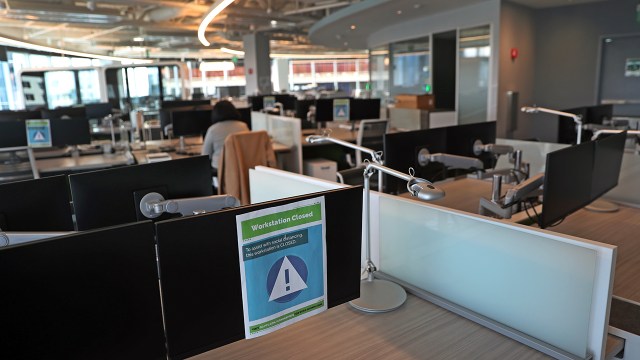
Roughly three years after the COVID-19 pandemic upended U.S. workplaces, about a third (35%) of workers with jobs that can be done remotely are working from home all of the time, according to a new Pew Research Center survey. This is down from 43% in January 2022 and 55% in October 2020 – but up from only 7% before the pandemic.
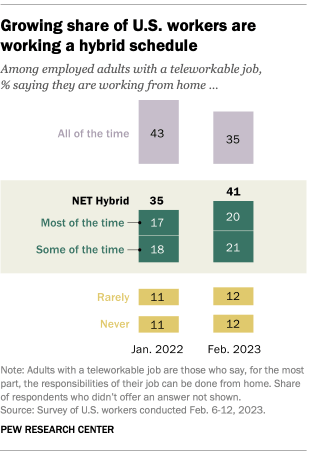
While the share working from home all the time has fallen off somewhat as the pandemic has gone on, many workers have settled into hybrid work. The new survey finds that 41% of those with jobs that can be done remotely are working a hybrid schedule – that is, working from home some days and from the office, workplace or job site other days. This is up from 35% in January 2022.
Among hybrid workers who are not self-employed, most (63%) say their employer requires them to work in person a certain number of days per week or month. About six-in-ten hybrid workers (59%) say they work from home three or more days in a typical week, while 41% say they do so two days or fewer.
Related: How Americans View Their Jobs
Many hybrid workers would prefer to spend more time working from home than they currently do. About a third (34%) of those who are currently working from home most of the time say, if they had the choice, they’d like to work from home all the time. And among those who are working from home some of the time, half say they’d like to do so all (18%) or most (32%) of the time.
Pew Research Center conducted this analysis to study how the COVID-19 pandemic has affected the workplace and specifically how workers with jobs that can be done from home have adapted their work schedules. To do this, we surveyed 5,775 U.S. adults who are working part time or full time and who have only one job or who have more than one job but consider one of them to be their primary job. All the workers who took part are members of the Center’s American Trends Panel (ATP), an online survey panel that is recruited through national, random sampling of residential addresses.
Address-based sampling ensures that nearly all U.S. adults have a chance of selection. The survey is weighted to be representative of the U.S. adult population by gender, race, ethnicity, partisan affiliation, education and other categories. Read more about the ATP’s methodology .
Here are the questions used for this analysis, along with responses, and the survey’s methodology .
The majority of U.S. workers overall (61%) do not have jobs that can be done from home. Workers with lower incomes and those without a four-year college degree are more likely to fall into this category. Among those who do have teleworkable jobs, Hispanic adults and those without a college degree are among the most likely to say they rarely or never work from home.
When looking at all employed adults ages 18 and older in the United States, Pew Research Center estimates that about 14% – or roughly 22 million people – are currently working from home all the time.
The advantages and disadvantages of working from home
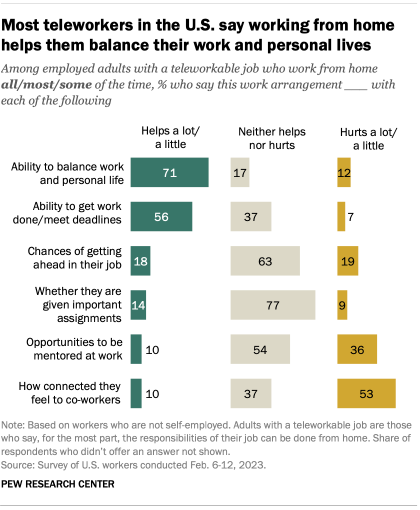
Workers who are not self-employed and who are teleworking at least some of the time see one clear advantage – and relatively few downsides – to working from home. By far the biggest perceived upside to working from home is the balance it provides: 71% of those who work from home all, most or some of the time say doing so helps them balance their work and personal lives. That includes 52% who say it helps them a lot with this.
About one-in-ten (12%) of those who are at least occasionally working from home say it hurts their ability to strike the right work-life balance, and 17% say it neither helps nor hurts. There is no significant gender difference in these views. However, parents with children younger than 18 are somewhat more likely than workers without children in that age range to say working from home is helpful in this regard (76% vs. 69%).
A majority of those who are working from home at least some of the time (56%) say this arrangement helps them get their work done and meet deadlines. Only 7% say working from home hurts their ability to do these things, and 37% say it neither helps nor hurts.
There are other aspects of work – some of them related to career advancement – where the impact of working from home seems minimal:
- When asked how working from home affects whether they are given important assignments, 77% of those who are at least sometimes working from home say it neither helps nor hurts, while 14% say it helps and 9% say it hurts.
- When it comes to their chances of getting ahead at work, 63% of teleworkers say working from home neither helps or hurts, while 18% say it helps and 19% say it hurts.
- A narrow majority of teleworkers (54%) say working from home neither helps nor hurts with opportunities to be mentored at work. Among those who do see an impact, it’s perceived to be more negative than positive: 36% say working from home hurts opportunities to be mentored and 10% say it helps.
One aspect of work that many remote workers say working from home makes more challenging is connecting with co-workers: 53% of those who work from home at least some of the time say working from home hurts their ability to feel connected with co-workers, while 37% say it neither helps nor hurts. Only 10% say it helps them feel connected.
In spite of this, those who work from home all the time or occasionally are no less satisfied with their relationship with co-workers than those who never work from home. Roughly two-thirds of workers – whether they are working exclusively from home, follow a hybrid schedule or don’t work from home at all – say they are extremely or very satisfied with these relationships. In addition, among those with teleworkable jobs, employed adults who work from home all the time are about as likely as hybrid workers to say they have at least one close friend at work.
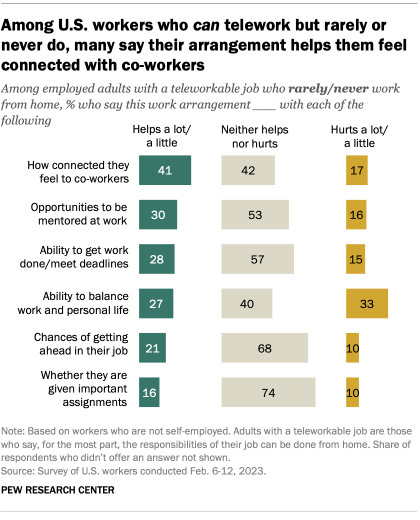
Feeling connected with co-workers is one area where many workers who rarely or never work from home see an advantage in their setup. About four-in-ten of these workers (41%) say the fact that they rarely or never work from home helps in how connected they feel to their co-workers. A similar share (42%) say it neither helps nor hurts, and 17% say it hurts.
At the same time, those who rarely or never work from home are less likely than teleworkers to say their current arrangement helps them achieve work-life balance. A third of these workers say the fact that they rarely or never work from home hurts their ability to balance their work and personal lives, while 40% say it neither helps nor hurts and 27% say it helps.
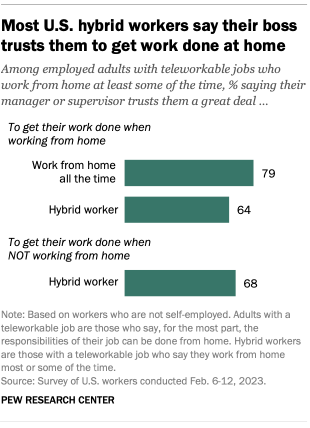
When it comes to other aspects of work, many of those who rarely or never work from home say their arrangement is neither helpful nor hurtful. This is true when it comes to opportunities to be mentored (53% say this), their ability to get work done and meet deadlines (57%), their chances of getting ahead in their job (68%) and whether they are given important assignments (74%).
Most adults with teleworkable jobs who work from home at least some of the time (71%) say their manager or supervisor trusts them a great deal to get their work done when they’re doing so. Those who work from home all the time are the most likely to feel trusted: 79% of these workers say their manager trusts them a great deal, compared with 64% of hybrid workers.
Hybrid workers feel about as trusted when they’re not working from home: 68% say their manager or supervisor trusts them a great deal to get their work done when they’re not teleworking.
Note: Here are the questions used for this analysis, along with responses, and the survey’s methodology .
- Business & Workplace
- Coronavirus (COVID-19)

Kim Parker is director of social trends research at Pew Research Center
A look at small businesses in the U.S.
Majorities of adults see decline of union membership as bad for the u.s. and working people, a look at black-owned businesses in the u.s., from businesses and banks to colleges and churches: americans’ views of u.s. institutions, 2023 saw some of the biggest, hardest-fought labor disputes in recent decades, most popular.
1615 L St. NW, Suite 800 Washington, DC 20036 USA (+1) 202-419-4300 | Main (+1) 202-857-8562 | Fax (+1) 202-419-4372 | Media Inquiries
Research Topics
- Age & Generations
- Economy & Work
- Family & Relationships
- Gender & LGBTQ
- Immigration & Migration
- International Affairs
- Internet & Technology
- Methodological Research
- News Habits & Media
- Non-U.S. Governments
- Other Topics
- Politics & Policy
- Race & Ethnicity
- Email Newsletters
ABOUT PEW RESEARCH CENTER Pew Research Center is a nonpartisan fact tank that informs the public about the issues, attitudes and trends shaping the world. It conducts public opinion polling, demographic research, media content analysis and other empirical social science research. Pew Research Center does not take policy positions. It is a subsidiary of The Pew Charitable Trusts .
Copyright 2024 Pew Research Center
Terms & Conditions
Privacy Policy
Cookie Settings
Reprints, Permissions & Use Policy

What you need to know about work-related travel expenses in Australia
I f you are required to travel as part of your job, then you likely incur various costs. Whether making a short trip to attend a meeting or taking an overseas trip for an extended period, you can deduct your travel expenses. However, the laws surrounding travel expenses are complicated, and the Australia Taxation Office (ATO) keeps close tabs on travel expenses . So, it's vital to pay close attention to what you claim to avoid mistakes.
What is work-related travel expenses
Work-related travel expenses are expenses incurred while travelling for work. If you incur any expenses related to work-related travel, such as accommodation or meals, you may be able to claim them as travel expenses on your tax return.
Using your car for work
If your job requires you to use a personal vehicle, you are entitled to deduct the motoring costs you incur while completing your job. This does not generally include the commute you make from your home to your place of work.
Eligibility
However, there are limited circumstances that may allow it. For example,
- An employee travelling between work sites throughout the day can claim their commute.
- If you travel directly from one job to a second job, as long as you do not return home in between.
- If you are travelling to a course or meeting for work, you can deduct expenses.
Methods to calculate work-related travel expenses
There are two options when it comes to vehicle travel for work tax deductions.
- As of April 2023, there is a flat rate of 78 cents per kilometre, and you can claim up to 5,000 km . You will need to keep a log of your travel to determine how far you travel for work purposes.
- Use a logbook if you travel and detail your running expenses, from mileage to fuel, servicing, repairs, insurance, and depreciation. If you use the logbook method, your logbook needs to show your work-related trips for a minimum continuous period of 12 weeks
Alternatively, you can use a r eputable tax software that will provide you with mileage auto-tracking and a simple snap and store for all of the receipts related to your business expenses.
Ensure you maintain your logbook for a minimum of 12 weeks before relying on it for your income tax return. The log should include odometer readings to determine the proportion of time you use it for work purposes. Store all receipts and invoices noting your spending on your vehicle so that you can claim the correct percentage of vehicle expenses.
Travel to and from work is considered a private expenditure unless your employer requires you to transport bulky equipment and vehicles. That being said, the ATO pays close attention to these types of claims and may disallow them.
Other work-related transport expenses in Australia
There are other expenses that can also be claimed for work-related travel if they are for:
- Heavy vehicles and utes if they have a carrying capacity of more than one tonne
- Vans with a carrying capacity of 9 or more passengers
- Fees for hiring or renting a car
- Costs incurred while driving someone else's vehicle for work purposes, such as fuel expenses
- Public transportation fares, including air, bus, train, tram, ferry, taxi, ride-share or ride-sourcing fares
- Expenses associated with work-related transport expenses such as bridge tolls, road tolls, and car parking fees
Other travel expenses
You can claim additional work-related travel expenses for costs you incur that your employer doesn't reimburse. These travel expenses must be work-related rather than your daily commute to and from work.
- Airfare and taxi fares
- Tunnel or bridge tolls
- Car parking
- The cost of public transport
If you are fined for a motoring offence, whether it is for parking, speeding or otherwise, you cannot claim these.
Overnight meals & accommodation
If you are travelling away from home, you can claim accommodation, meals and entertainment. You cannot claim meal expenses if your employer reimburses you or provides you with a full allowance for these expenses. A number of businesses will provide an allowance, expenses included, so the employee doesn't need to cover the costs. You may be taxed for those allowances, in which case a deduction is possible for costs incurred.
The ATO provides a lengthy list of what is viewed as a reasonable spend on accommodation, meals, and incidental expenses. You won't need to produce detailed records with receipts or invoices if you claim below the specified ATO allowance. If you exceed the reasonable amounts as laid out by the ATO, or you don't receive an allowance, then you need to keep detailed records to show your spending wasn't extravagant.
The ATO established a reasonable amount to highlight when detailed records must be kept. Many people would assume that they can claim this maximum amount, but we don't recommend you do this. You must only claim the amount of money you spent.
Even if you claim below the reasonable amount, you should be able to prove the expenses you incurred. A bank or credit card statement is viewed as sufficient evidence should the need arise. It will help support your claim that you were in the particular area at the time you claimed.
As long as your travel includes an overnight stay, you can claim business meals, food and beverages. You can't claim meals when you work from home. You could claim tax travel expenses if you always work from home and need to travel to an office.
What you can’t claim
Travel for personal reasons or between your home and your workplace can’t be claimed Examples include:
- Travel between your home and regular place of work or vice versa
- Travel for personal reasons, like running errands on the way to or from work
- Travel for overtime or out-of-hours work
- Travel from your home (which is also your place of work for one job) to another location where you work for someone else
Read our guide to tax deductions to learn about other tax deductions.
Other situations that allow you to claim travel deductions
You may be able to claim work-related travel expenses tax if you attend a work conference or course. If it is local, you can claim transport or mileage. If it's interstate or overseas, you can claim accommodation, airfares and meals.
In all cases, your best bet is to visit a tax agent to ensure your travel deductions are above board.
This article originally appeared on QuickBooks and was syndicated by MediaFeed.org .
43 incredible facts about Australia you may not believe are true


IMAGES
VIDEO
COMMENTS
Topic no. 511, Business travel expenses. Travel expenses are the ordinary and necessary expenses of traveling away from home for your business, profession, or job. You can't deduct expenses that are lavish or extravagant, or that are for personal purposes. You're traveling away from home if your duties require you to be away from the general ...
According to the IRS, ordinary and necessary expenses related to the COVID-19 pandemic can include a range of expenses related to remote work, health care, and childcare, such as: Home office items, such as monitors, printers, phone, and office supplies. Cost to install new or expanded internet service. Cost of increased utilities.
This actually depends on things like what is her official legal office location, and is the employer registered to do business in the location in which the remote employee resides. If the employee's legal home office is the main office - then the expenses for travel are commuting expenses. There is a lot of inaccurate though well ...
Employers should exercise caution when determining the tax consequences of costs incurred for employee travel between their personal residence and the employer's office or another work location. Only payments for certain types of transportation and travel expenses are tax free to the employee. Employers that erroneously exclude expenses from ...
2023 and 2024 Work From Home Tax Deductions. The 2017 tax reform law ended the ability for most taxpayers to deduct expenses for working from home just in time for millions more people to begin working from in response to the Covid pandemic. Nowadays only a few select groups of salaried home-based workers can still deduct relevant expenses.
Depreciation is also an allowable expense for a home that you own. For example, if your office is 250 square feet and your home is 1,000 square feet, you'd deduct 25% of your allowable expenses (250/1,000 = 0.25). If you had $10,000 in eligible home-related expenses, you could claim up to $2,500 in deductions.
For instance, if your home office takes up the maximum 300 square feet of your home, the maximum you can deduct is $1,500 under the simplified home office deduction, but if you use up to 300 square feet of your 2,000 square foot home and your home expenses are $40,000 your deduction will be $6,000 (300/2000 sq ft x 40,000).
If your employer won't pay expenses for your extra costs due to necessary working from home, you can claim tax relief on £6/wk and ask for this amount to be deducted from your taxable income. It's possible to claim more if your costs are higher, but it becomes a much more labour intensive process as you'll need to set up a.
For example, if you have a 300-square-foot home office (the maximum size allowed for this method), and you work from home for three months (25% of the year), your deduction is $375 ( (300 x $5) x ...
You can deduct business travel expenses when you are away from both your home and the location of your main place of business (tax home). Deductible expenses include transportation, baggage fees, car rentals, taxis and shuttles, lodging, tips, and fees. You can also deduct 50% of either the actual cost of meals or the standard meal allowance ...
For example, let's say a hotel room for one person costs $100, but a hotel room that can accommodate your family costs $150. You can rent the $150 option and deduct $100 of the cost as a business expense—because $100 is how much you'd be paying if you were staying there alone.
To be able to claim all the possible travel deductions, your trip should require you to sleep somewhere that isn't your home. 2. You should be working regular hours. In general, that means eight hours a day of work-related activity. It's fine to take personal time in the evenings, and you can still take weekends off.
No expenses for travelling to and from work. If an employer reimburses an employee for what HMRC call "ordinary commuting" both the employer and employee will have more money to pay over to HMRC in tax. Ordinary commuting, according to HMRC, is any travel between a permanent workplace and home, or any other place which is not a workplace.
Travel expenses are costs associated with traveling for the purpose of conducting business-related activities. Travel expenses can generally be deducted by employees as non-reimbursed travel ...
Time spent traveling during normal work hours is considered compensable work time. Time spent in home-to-work travel by an employee in an employer-provided vehicle, or in activities performed by an employee that are incidental to the use of the vehicle for commuting, generally is not "hours worked" and, therefore, does not have to be paid. This provision applies only if the travel is within ...
Business travel deductions are available when employees must travel away from their tax home or main place of work for business reasons. The travel period must be substantially longer than an ordinary day's work and a need for sleep or rest to meet the demands the work while away. Travel expenses must be ordinary and necessary. They can't be ...
Allowable travel expenses when working from home. Case law identifies when individuals can make claims for travelling between places of work because this can be a minefield, but one in which HM Revenue and Customs takes an acute interest, writes Vanessa Sanders. When employees work at home full time, the employer should be able to re-imburse ...
The IRS defines a tax home as the city or general area where someone's main place of business or work is located. If your client travels away from their tax home for work purposes, their travel expenses may be deductible. "May be deductible" has taken on new meaning since the Tax Cuts and Jobs Act was passed in late 2017.
The judge in the current case therefore concluded that the employee's automobile expenses should be fully deductible since the taxpayer's T2200 clearly indicated that she was required to work from a home office and specified that 90 per cent of her work was to be performed from there. In addition, it was clear that the taxpayer did not have ...
Another advantage of working from home: commute time savings. A report by the National Bureau of Economic Research reveals that globally, people who work from save an average of 72 minutes a day ...
Chapter 3 at 3.36 onwards contains some guidance for those working from home. The general rules for tax relief on travel expenses. We set out the rules as to the types of journey you can generally claim tax relief on, in our employment section. There, you will also find information on the process for claiming tax relief on travel expenses.
Trips while working and between workplaces. You can claim a tax deduction for the cost of transport on trips to: perform your work duties - for example, if you travel from your regular place of work to meet with a client. attend work-related conferences or meetings away from your regular place of work. deliver items or collect supplies.
3. Consider Costs of Working at Home. When you work in an office, the computers, phones and office furniture are typically provided, along with utilities. Your employer may also provide perks like free snacks or drinks. When working from home, you may be on your own for some or all of these expenses, especially if you freelance or are a ...
One aspect of work that many remote workers say working from home makes more challenging is connecting with co-workers: 53% of those who work from home at least some of the time say working from home hurts their ability to feel connected with co-workers, while 37% say it neither helps nor hurts. Only 10% say it helps them feel connected.
What is work-related travel expenses. Work-related travel expenses are expenses incurred while travelling for work. If you incur any expenses related to work-related travel, such as accommodation ...